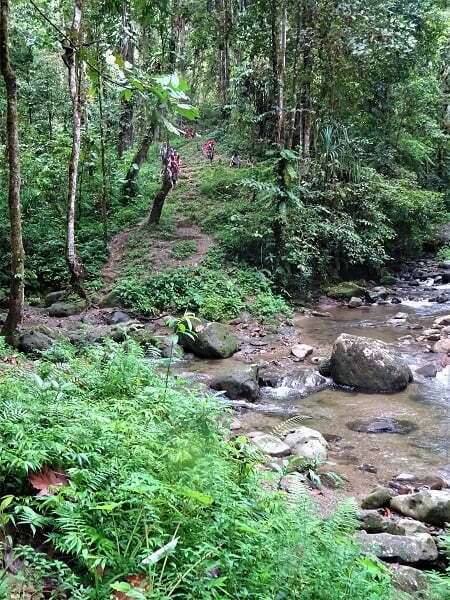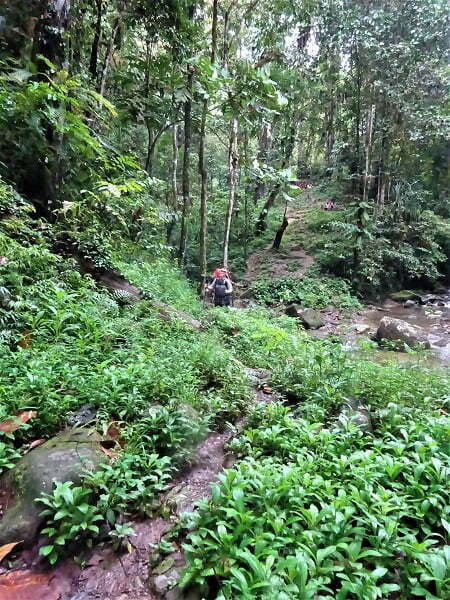TWO WEEKS OF SITUPS...
Trekking Kokoda as the world turned to shit
Ahead lay eight days of trekking through remote, tropical jungle. Roughly a hundred kilometres over undulating, muddy terrain, right on the fringes of the wet season. Factor in the ups and the downs, it’s likely even further than that.
My preparation: Two weeks of sit-ups, a couple of forty-minute sessions walking up and down hills and, only one (relatively flat) six-kilometre walk laden with my pack… two days before departure!
As we flew low over the Coral Sea on approach to Port Moresby, the clouded sky was the perfect mirror of my suddenly troubled mind. What sort of dickhead attempts this, yet does no training in preparation?
My originally, flippant dismissal of the challenge ahead, now replaced with visions of my exhausted body lying prone beside the track, after just the first afternoon of trekking…
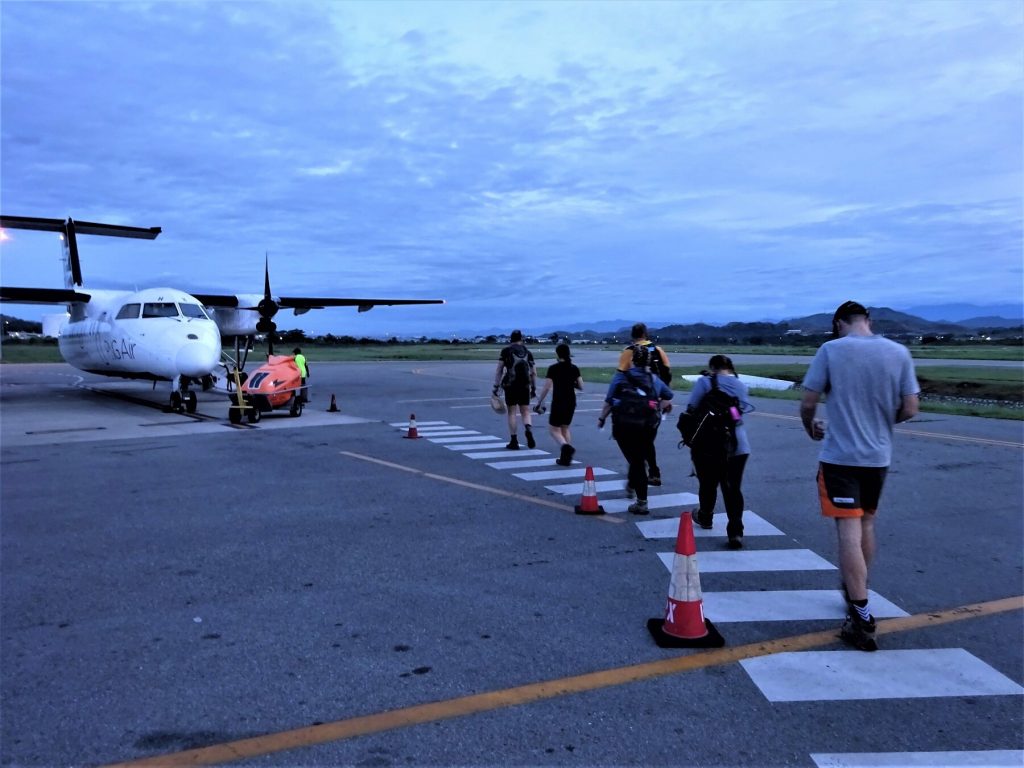
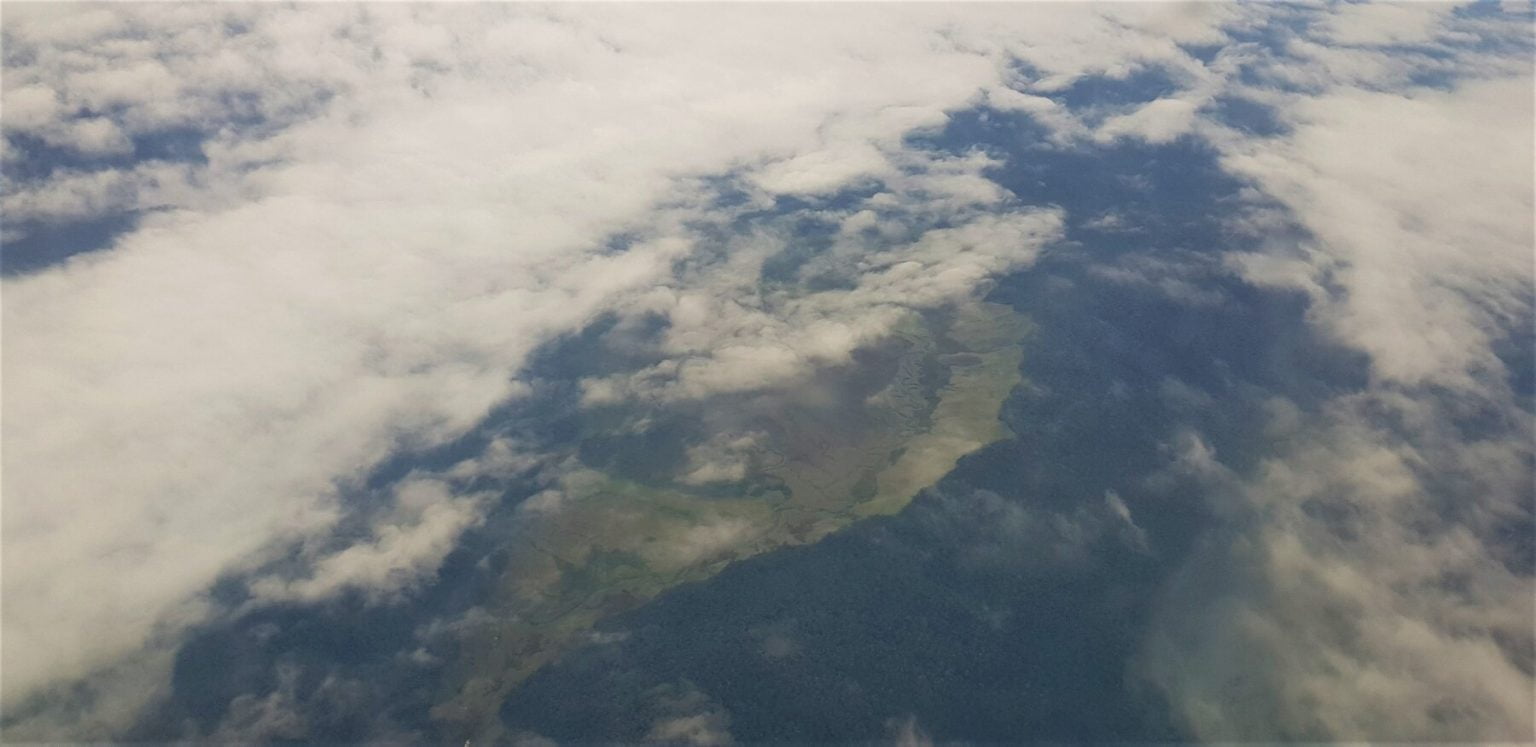
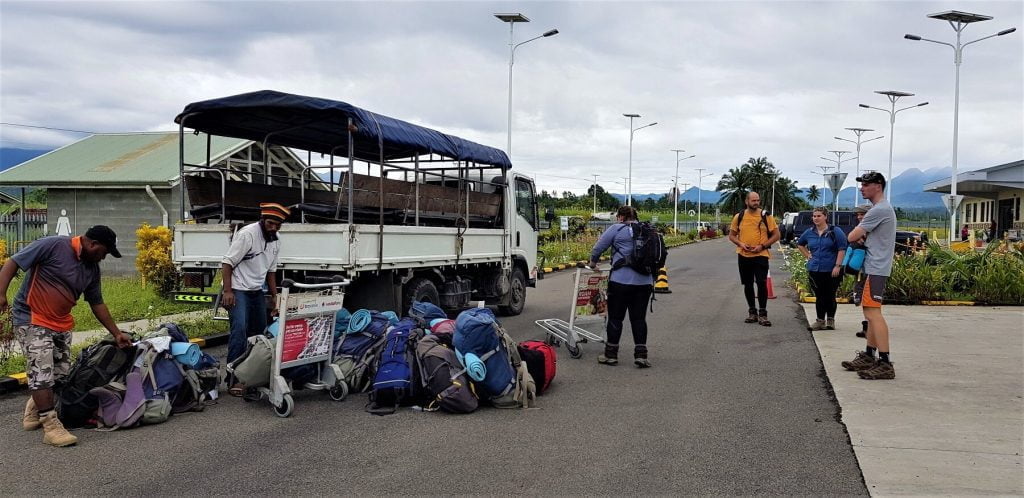
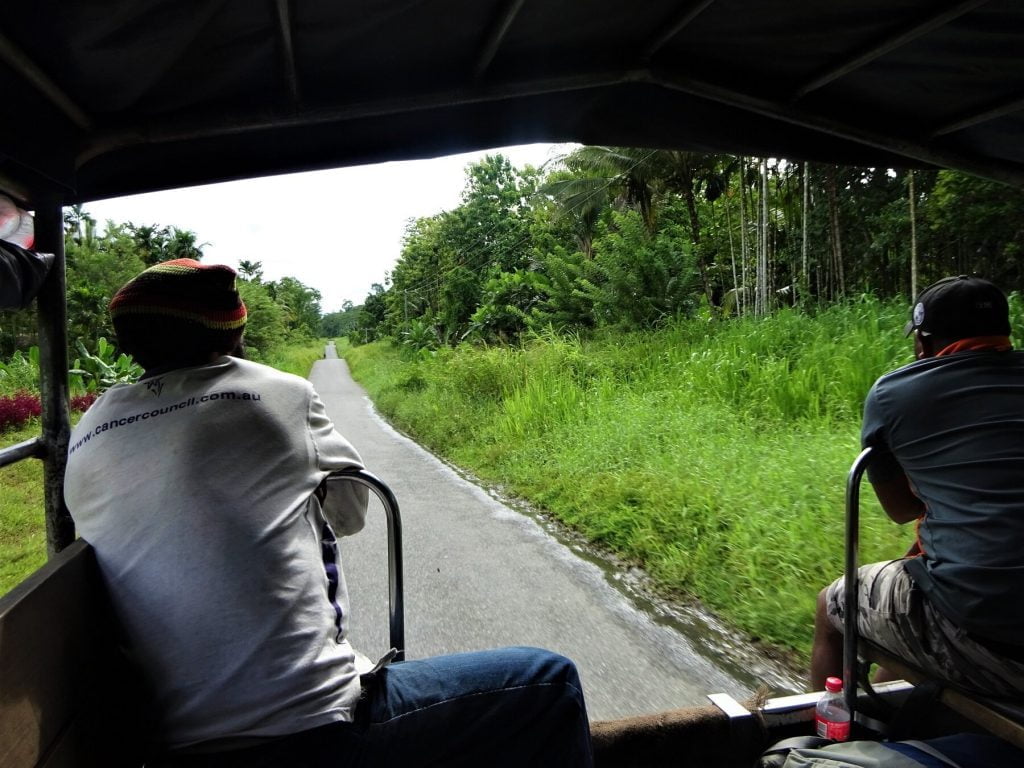
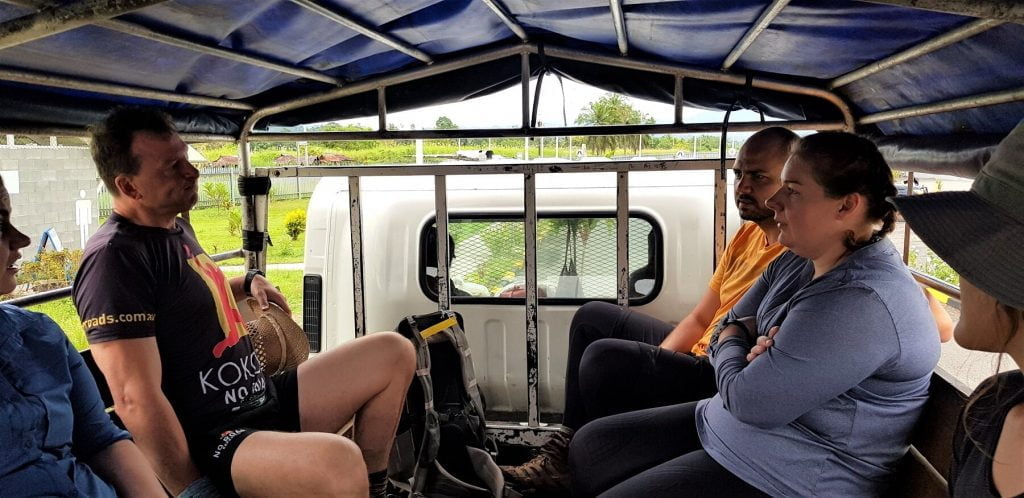
My boots looked mint. Further evidence that this average man (think early forties with a slight potbelly) had dismissed the reality of the task ahead. They were worn from the get-go. An homage to the efficiency of the local Papuan airline that flew us into Popondetta, and that off chance that our luggage was not guaranteed to arrive at the same time as we.
That short thirty-minute flight over the Owen Stanley Ranges gave us a birds-eye view of the terrain we’d be traversing. It was all green, hilly, and foreboding. More images of the shit fight ahead flashed through my mind.
Ahead lay another few hours on the perfectly christened “Chiropractic Express”, our vehicle transfer to our trek staging area at Kokoda itself. Think rutted roads with your arse sat on the thinnest of cushions in the back of a truck. By the time that journey was over, an idea had formed in the back of one’s mind that a trek back, rather than endure that again, suddenly didn’t sound like so bad an option…
There is a smell that hits you when you touch down in Papua New Guinea. This isn’t a condescending judgement, simply a statement of fact and little surprise in a country where over 40% of the population lives below the poverty line (and surely another large portion live on the cusp of it). Deodorant would be the least of my concerns as well.
Why I mention this is in relation to the humidity. The air is thicker than my grandmother’s Hungarian Goulash, and once removed from the breeze that bumpy truck had generated, I was sweating my arse off and would shortly become one with the locals.
It was under these oppressive conditions we made our final preparations to begin our trek, and I hadn’t even yet shouldered my pack!
We were a posse of six, three of whom had engaged a personal guide to shoulder their packs, and the other three (including that fool who’d done next to no preparation, me) would be trekking the length of the track with what already felt like a small child on their shoulders.
There may have been a gentle incline, but for the most part, our journey started flat, possibly a cruel way to lull you into a false sense of security that this might just be a bit better than expected.
It was a well-worn path we trod, the trail free of weeds or grasses and such, the compacted brown soil, when slightly wet (which was likely always in such a clammy environment), was like an ice rink. True to form, I was quick to end up on my arse as a result of my cavalier stride! I suppose someone had to be first…
Then came the ascent. It was to be only a short climb when compared to those that lay ahead, however, we didn’t truly know this at the time.
As the first, it was always going to be a challenge.
Four of us at the front set a good pace, Steve our local Papuan lead guide (this meant nobody could walk ahead of him) and surprisingly, the three of us that had chosen to trek with our full packs.
Our pace was good, until, in a scene reminiscent of the original Star Wars movie (that moment where Luke Skywalker cries “This R2 unit has a bad motivator” as a droid blows), I blew up.
Think serious distress, guzzling water as I fanned myself with my cap, and my kind companions patiently waiting.
It turns out climbing in a hat is a bad idea, should I wish to not overheat!
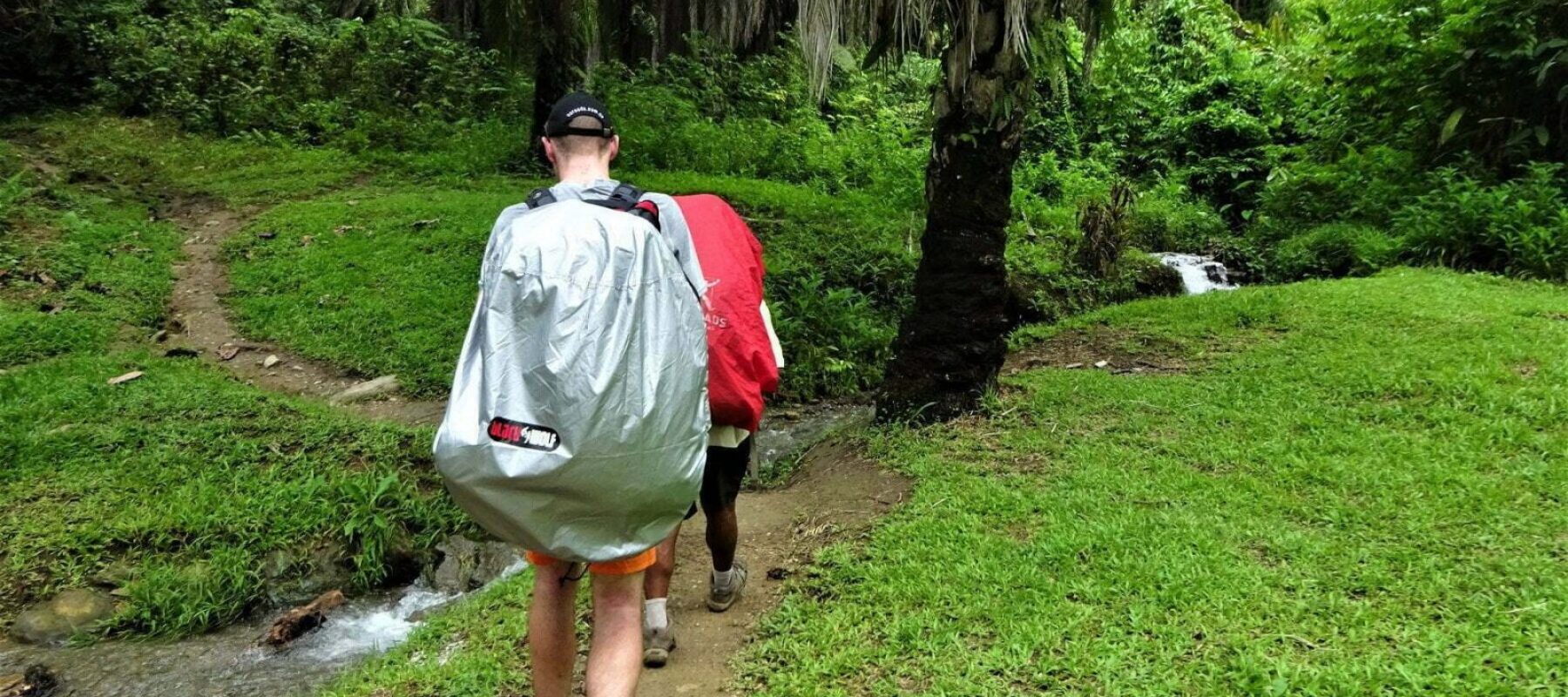
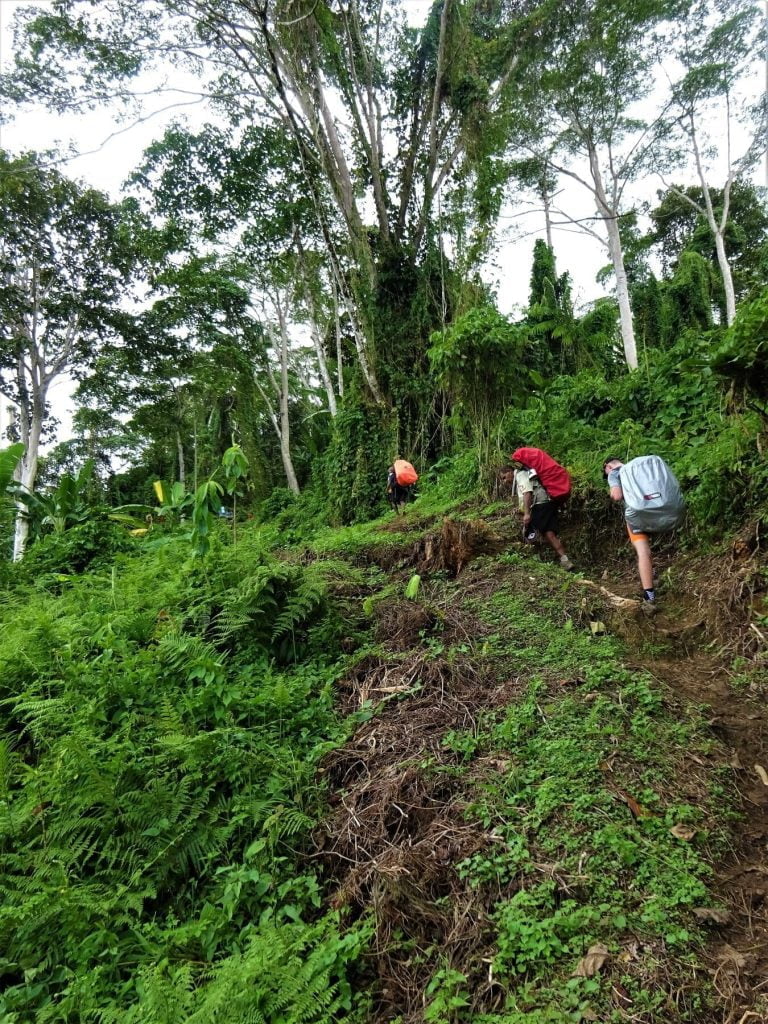
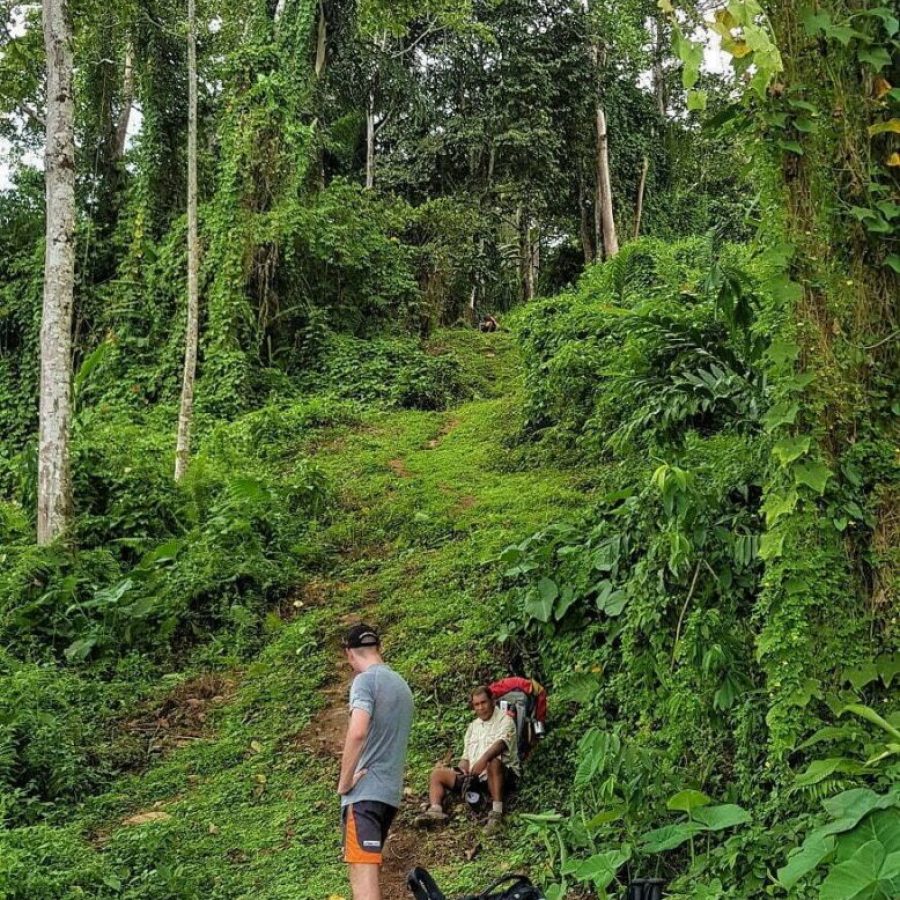
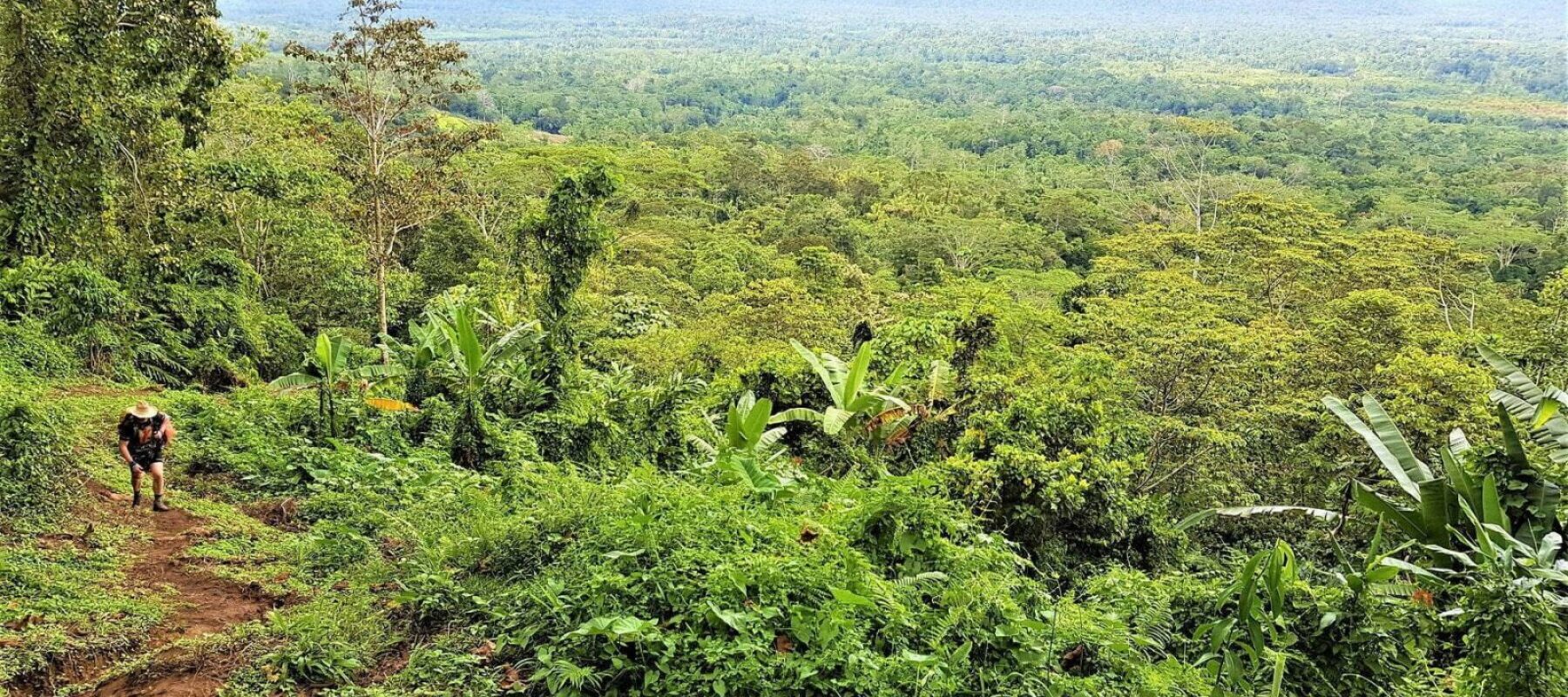
Now acutely aware of my limitations, it was but a short distance further and we were done for the day, our group stretched like some worn piece of elastic and with us now some ways ahead of the others.
A couple of high fives between us (we were pretty chuffed to have those first physical and mental hurdles behind us now) were all we could do as we sucked in the air and dumped our packs on the grass.
Any thoughts of how good we were, were quickly shattered by the efforts of our local guides who had made the climb with ease, most of those barefoot or in flip-flops, burdened with all of the camps gear which they’d by now already erected (yes, all of the tents were already waiting for us).
Our campsite Deniki, afforded stunning views back down the valley towards the town of Kokoda (were it not for a strip of cleared land that marks the airstrip, I’d have had little idea where it was) and the satisfaction in removing our boots after only a few hours marching was immense.
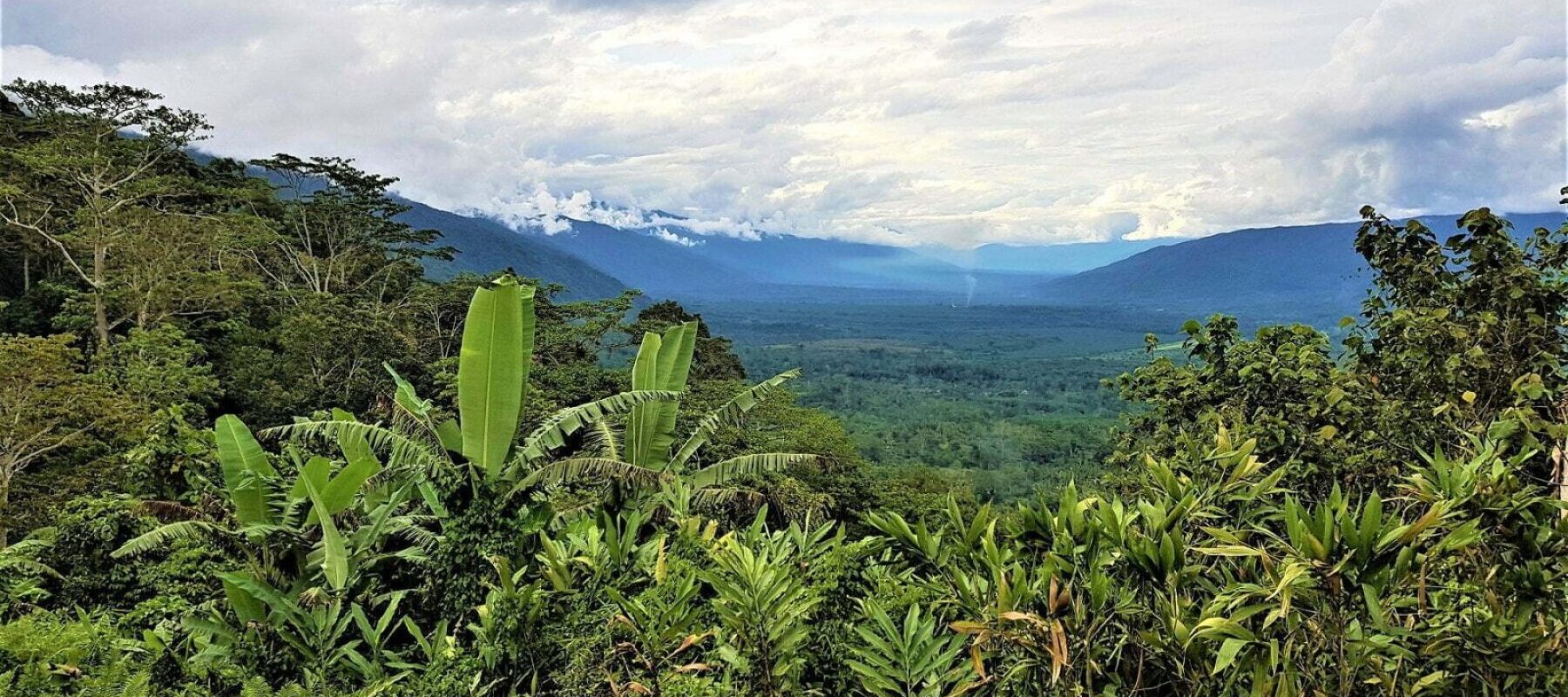
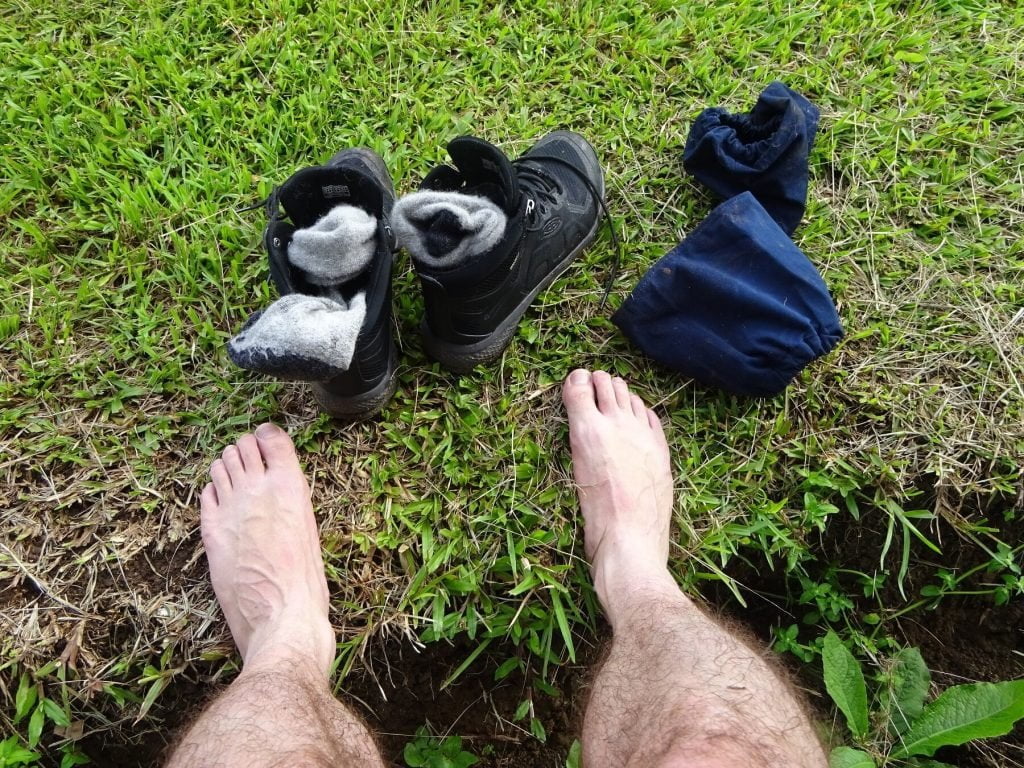
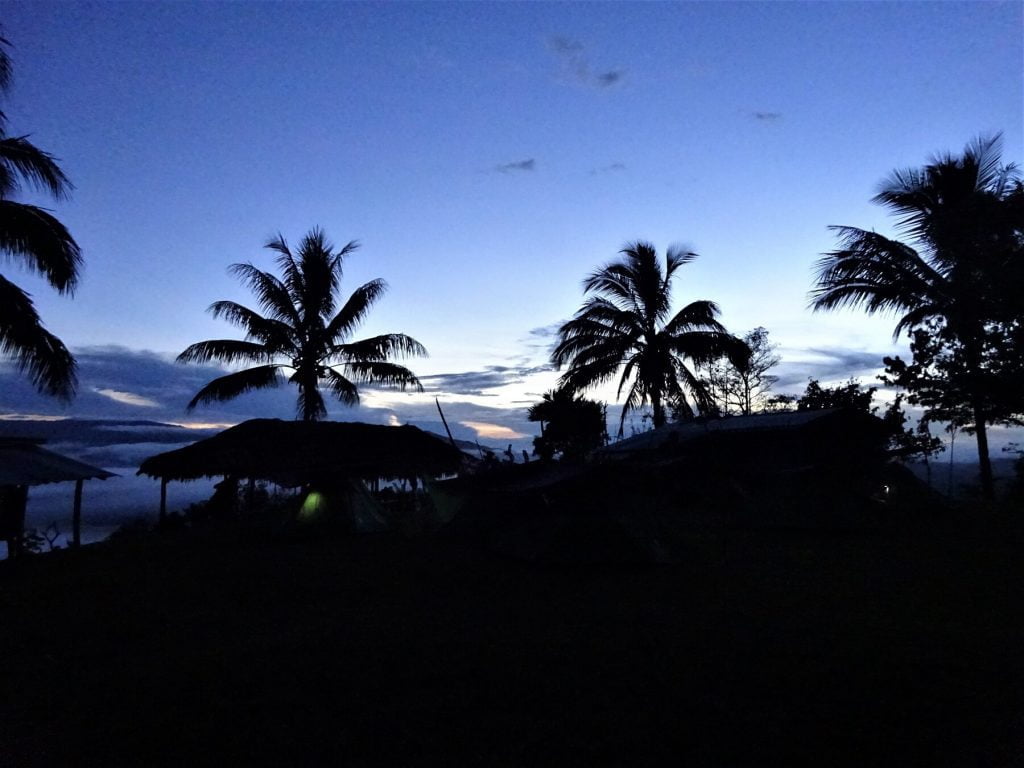
Clear skies greeted those of us who woke before the dawn which, to be honest, was almost all of us (the youngest of our posse soon proved he could sleep through almost anything) and after a breakfast overlooking the cloud covered valley below we were off for our first full day of trekking.
The sun made everything look greener, and surrounded by fields of Choko, we marched our way out of Deniki single file, like a big long line of ants.
As lovely as the day looked, when you’re trekking through a jungle, the sun is rarely your friend and any patch of relief provided by the at times all too sparse canopy, was certainly welcome.
The terrain was gently undulating, and the going relatively easy, something of a relief to the guy who’d recently discovered that wearing his hat could be problematic (surprisingly, the legs were feeling pretty good).
Beside a small waterfall, a pair of rangers we encountered, advised us we were the first group to walk the track for the year, and after this brief rest (where they checked our track permit was in order) and the chance to refill our canteens, we began the days first real ascent.
Now, I’ll use the word ‘track’ a lot, as that is what this is considered, however I’ll put in something of a disclaimer here (nice and early) that it’s something of a misnomer.
When they say the track is maintained, it largely means that some overgrown vines may have been cleared, or a bridge (I’d come to learn that the term ‘bridge’ generally means a log or two) repaired or replaced having fallen or been washed away.
The trail itself, if you’re lucky, someone has carved a step or two, but generally, it’s a slick line of mud, rutted by water and at times, it may in fact actually be a flowing creek bed.
This next section wasn’t so bad as what was to come, but it was our first proper taste!
A good sweaty slog had us wandering into the village of Isurava, although the group elastic had well and truly stretched (there were four of us in the lead posse, with two trailing behind).
There’s an oddly cold sensation when you first drop your pack, its sudden removal exposing your sweat covered back to the air, but the relief is amazing.
Initially, this was planned as a shorter break to have a rest and a brief morning tea, however, as we lounged and the time passed (the originally clear day had started to cloud over and we even copped some drizzle), it became apparent that the back half of our party was really struggling so it was decided that we’d lunch here as well.
Minutes ticked away, and an interested group of local kids became our audience, when eventually Pete (our guide) wandered up alone.
I’m not sure I’ll ever know how this impacted the others at that very moment, but I remember suddenly feeling numb and thinking in the back of my mind “Wasn’t that supposed to be me?”
One of the women in the trailing duo, Alarnah, had passed out on the hillside, some ways below the village!
First thoughts were all towards how she was, and then my mind wandered to the rest of us. “What the fuck happens now?”
At this point, we weren’t even halfway through our trekking for the day…
For some reason, my mind at this point in the tale always takes me to a scene on an aeroplane and that famous cry, “Is there a doctor on board?”
Now the funny thing is, we were kind of surrounded by them.
Of our party of six, we had one nurse and three paramedics (although one of them just happened to be unconscious at this point).
Back down the hillside one of them strode, as we nervously waited for further news.
Eventually, supported on either side, Alarnah was brought up to the village where she was assessed and various discussions took place.
Rightly, the decision at this point is left up to our guide, and ultimately, it was made that she’d need to be medically evacuated and flown back to Port Moresby where she can be properly assessed and treated.
Despite initially phoning through to the Melbourne office with the wrong insurance details, it was eventually coordinated and decided that we’d need to get to the site of the Isurava Battlefield, where a helicopter could better reach us.
Cloud had by now set in, then came the drizzle, and ahead was a 45-minute slog for an able-bodied trekker. Our sixth trekker was seemingly wrecked on her feet.
The elastic that was our group stretched pretty quickly on that section of track, and just as we hit our first creek log crossing, the heavens opened up.
Picture an ice skating rink… then transplant that onto a rounded sliver of wood, 25 centimetres in diameter, shaking legs from trudging with your pack (thankfully our bags were carried across by our local guides).
We inched our way across.
In the meantime, the locals raced across a narrower log, barefoot and laden with equipment…
Possibly ten to fifteen minutes later, with wet leaves flapping and slapping against bare legs, we slid our way down a muddied trail into a very wet Isurava battlefield site.
Some time later, it may have been over an hour, who knows, the trailing group inclusive of patient fell into camp.
It had taken no fewer than three separate shots of adrenaline to get Alarnah through that short journey!
No tents tonight, as we all opted to rest our sodden bodies and damp clothes inside a rickety hut (although the other 4 were in a more solid, yet pitch black corrugated steel number). Seriously, the floor flexed as we tiptoed over it, and not only two oddly shaped windows allowed in some dull light, but also the wider cracks within the floor.
All manner of clothing was hung from the rafters in a vain attempt at drying it…
Picture a dark Chinese laundry atop a trampoline, and you might not be too far off the mark!
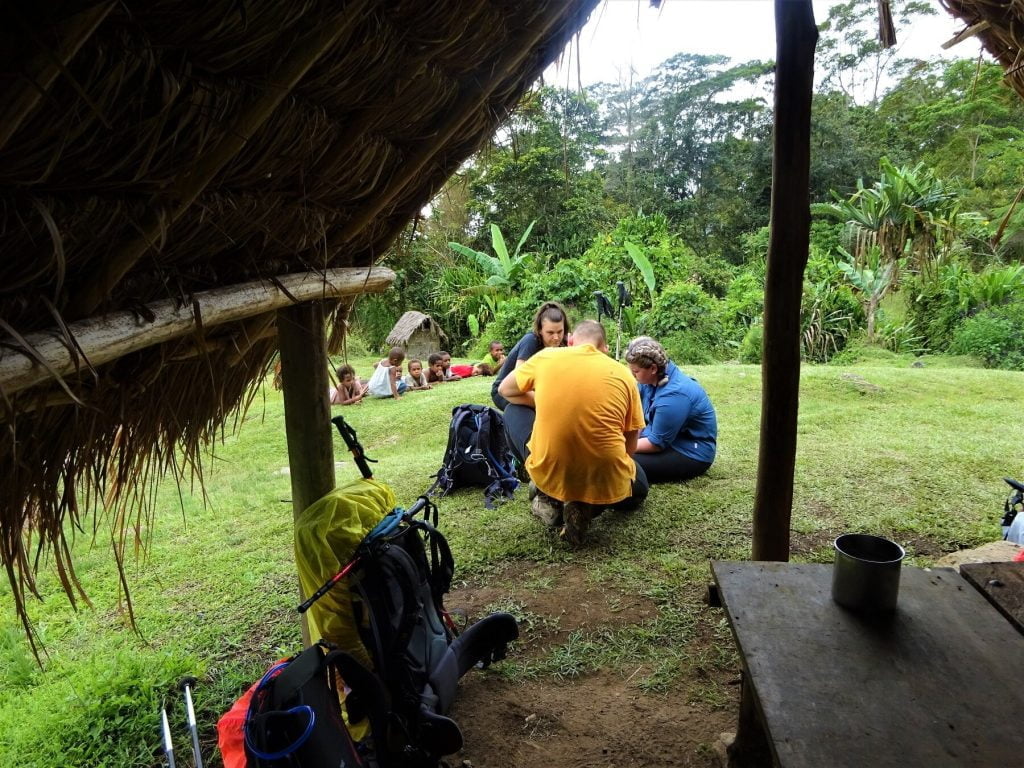
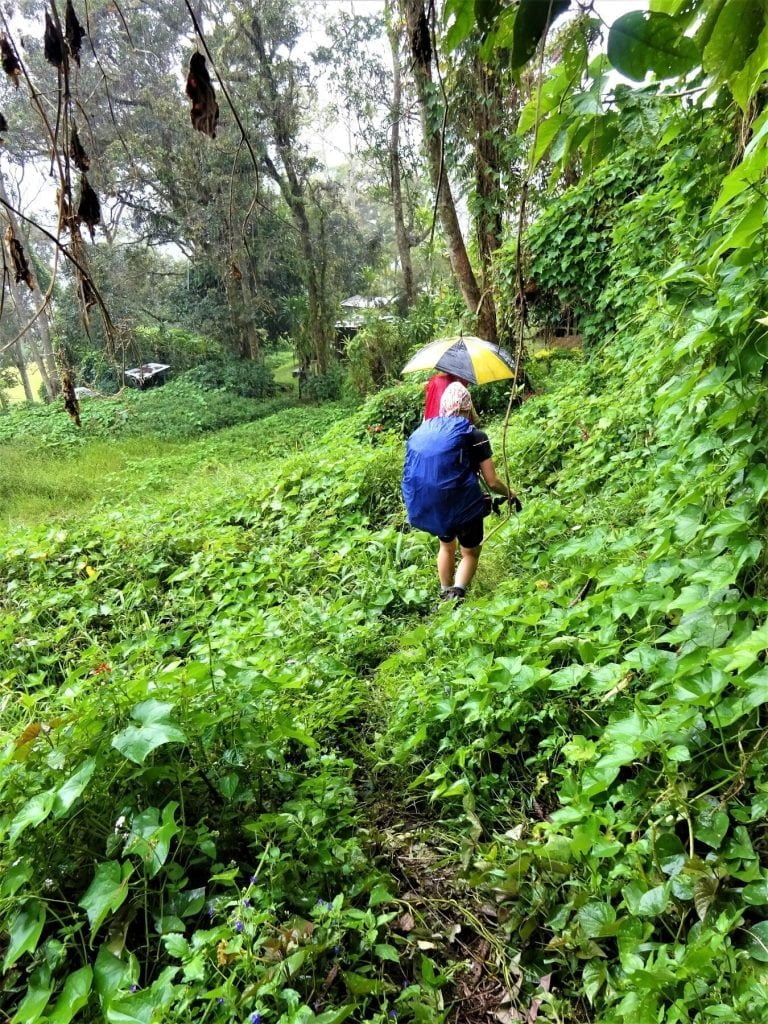
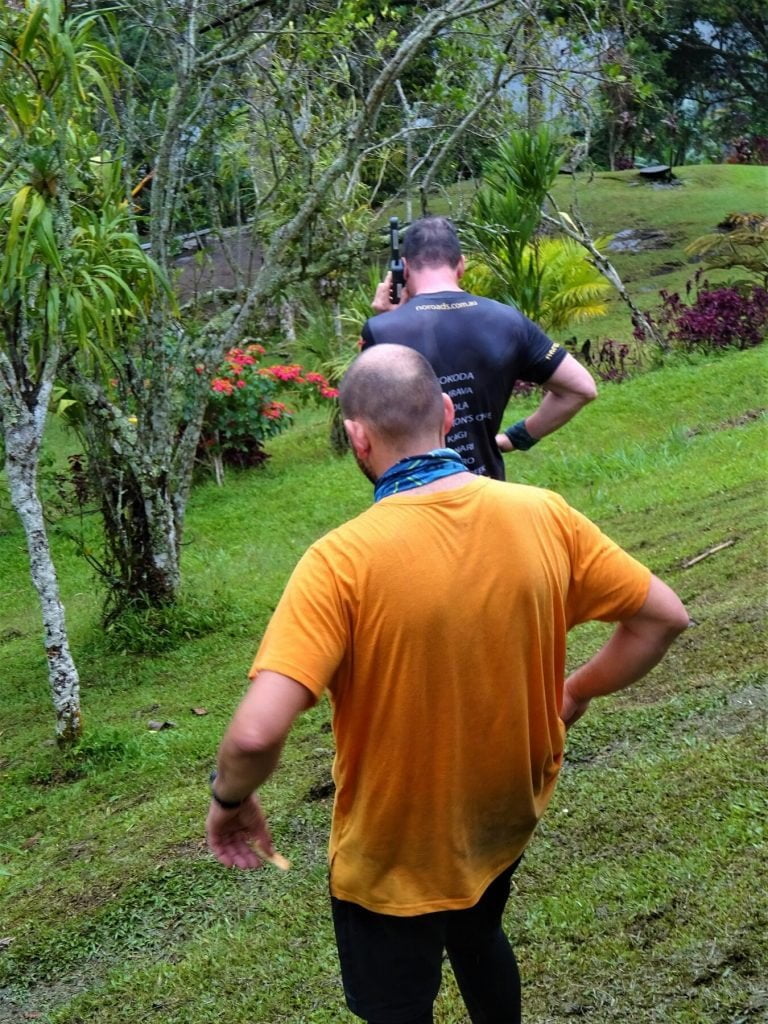
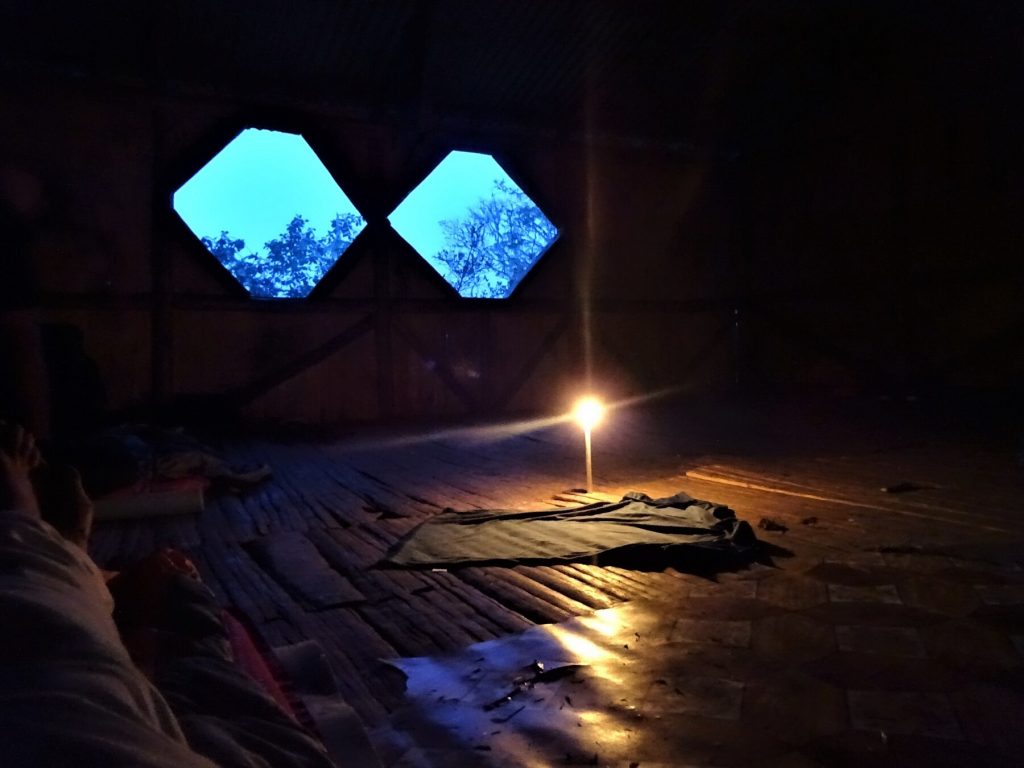
We were a somber group that morning, not simply because we were reflecting on the sacrifices made by soldiers at that battlefield site (it was here that Bruce Kingsbury was awarded a posthumous Victoria Cross), but also because we were to be reduced to a group of five.
Fortunately, nobody among us had made the ultimate sacrifice, but perhaps, at that moment in time, we had an inkling of what it may have been like for one of those Australian diggers to have lost a mate on the track.
As we broke camp and began our climb out of Isurava, the chopper could be spied coming in, our local Papuan guides down below, hooting and hollering like madmen at the sky above.
It was a pretty surreal moment.
Sobering was a most fitting word for our morning at the Isurava battle site…
Upwards we trudged, breaking to rest at Conn’s Rock (a large stone where Australian doctors performed surgery during the Kokoda conflict), where an entrepreneurial local charged us a few kina for the privilege of a visit.
A gentle meander, before it was down to Alola, lunching there in the very village where we should have been dining the previous night.
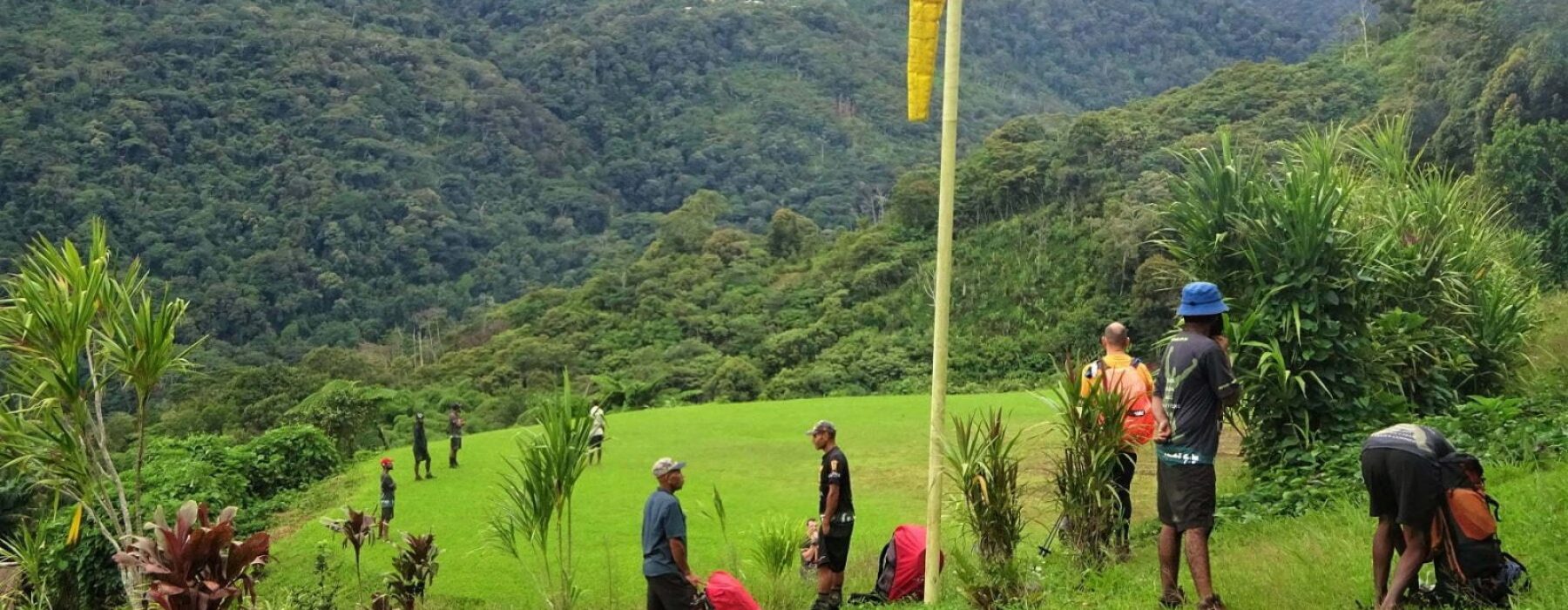
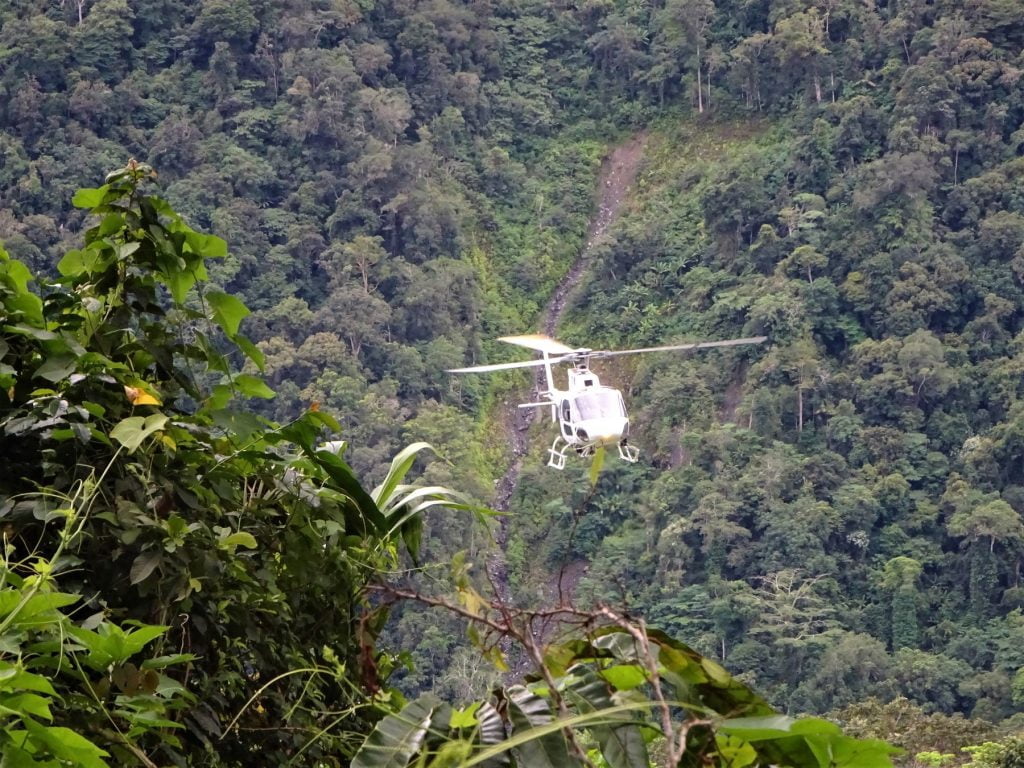
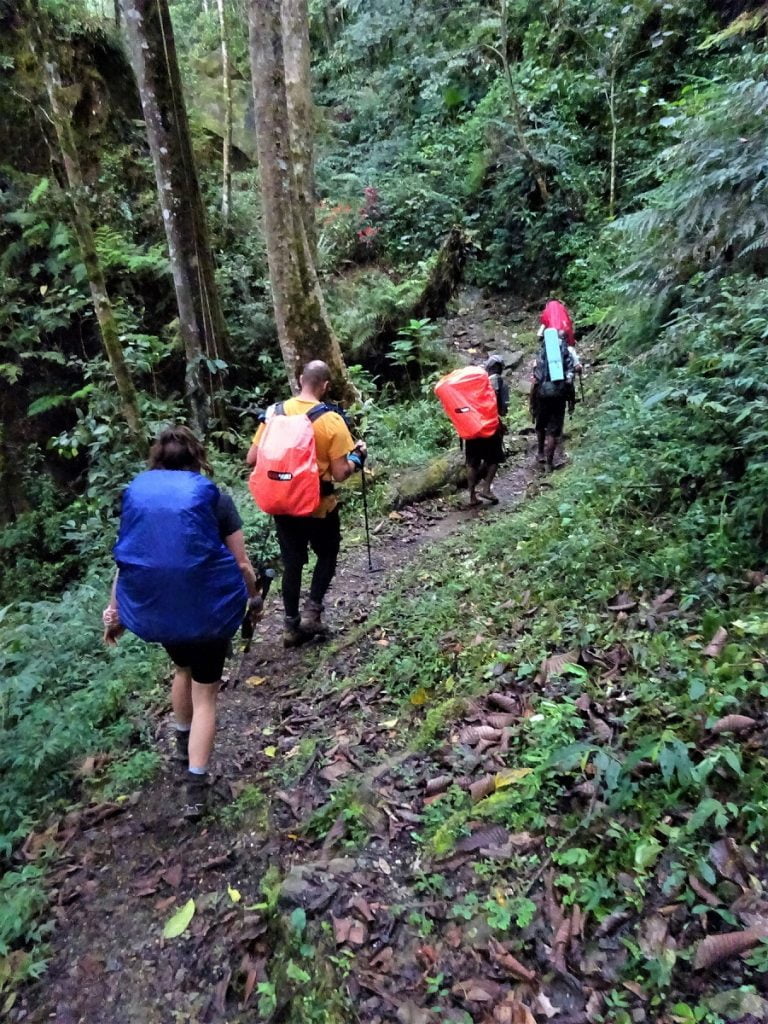
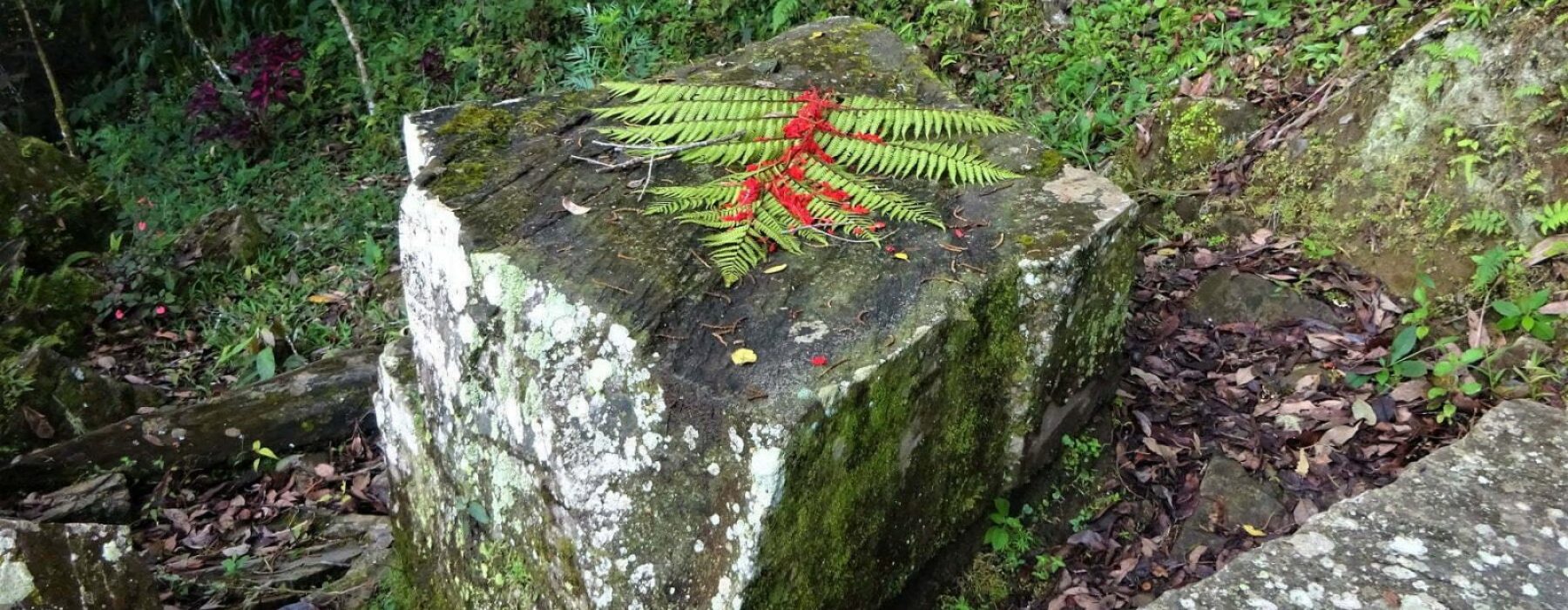
You lunch, you sit, you get up, and lift your pack back on again.
In a matter of days, it’s become a familiar, but at times painful routine.
Not pain necessarily physical in nature, but there’s a sense of discomfort. Weirdly, it becomes a good feeling. It’s better than being numb!
There are those times when the shoulders have borne too much weight, they might start to tingle, so you tighten your pack around your waist, and slip those shoulder straps off for a moment.
Maybe for a moment standing still, possibly for a few minutes as you walk. Whatever works for you.
As we departed Alola, the start of a steep descent, we all felt a little better as Benny, our local guide and chef, also fell flat on his arse.
Comforting to know what can happen to us, can happen to the best of them!
Suddenly, it felt like we were truly all in it together.
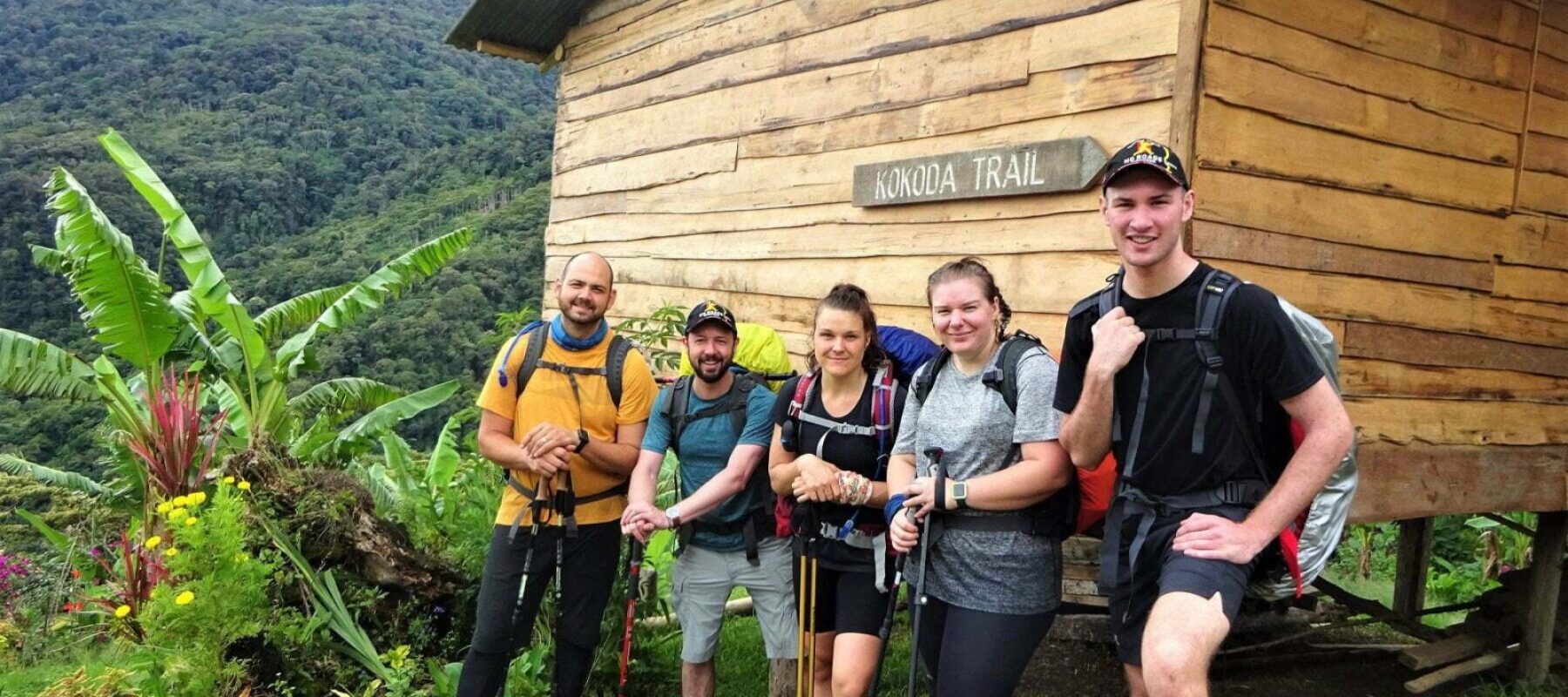
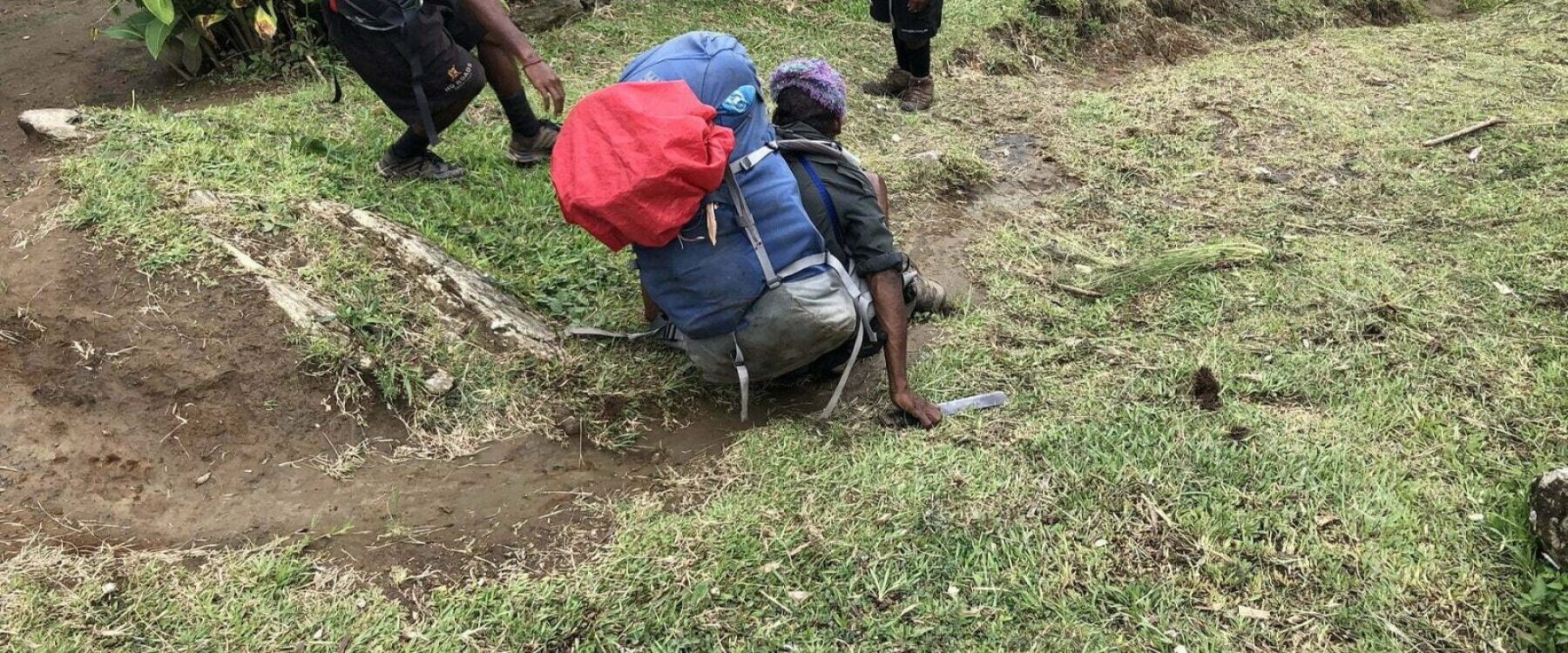

It was a long day, as over it and the following day we were aiming to make up all the time we’d lost due to the tragedy that was day two.
Now, I’ve not talked much more about the folly that was my (non) training regime, but oddly, I was certainly not suffering as I’d expected. Thus far, I was one lucky bastard!
Rivers galore, and these bad boys were generally raging torrents. One misstep and you were screwed!
Steve (the leade guide who I’d largely planted myself behind since day one), began telling me, in what would become a regular request, “Slow down” as I crossed the water.
Maybe I was cavalier? Possibly a slow learner? In all likelihood, I was probably just shitting myself and didn’t want to dawdle!
Then came the up…
It wasn’t the steepest hill we’d climbed, and by the trek’s conclusion, there’d be steeper still, but this fucker was long.
Have you ever heard of a false peak? Basically, where you think you’ve reached the top, only to discover you’ve been duped, it’s just a short plateau before it was up again. It felt like there were hundreds of them!
Occasionally, Steve would point out an old foxhole from the war. Round for the Japanese, square for the Australians.
At one of our rest points, we bush-bashed a little off the trail to inspect an old Japanese mortar pit, old munitions just sitting there, neatly stacked…
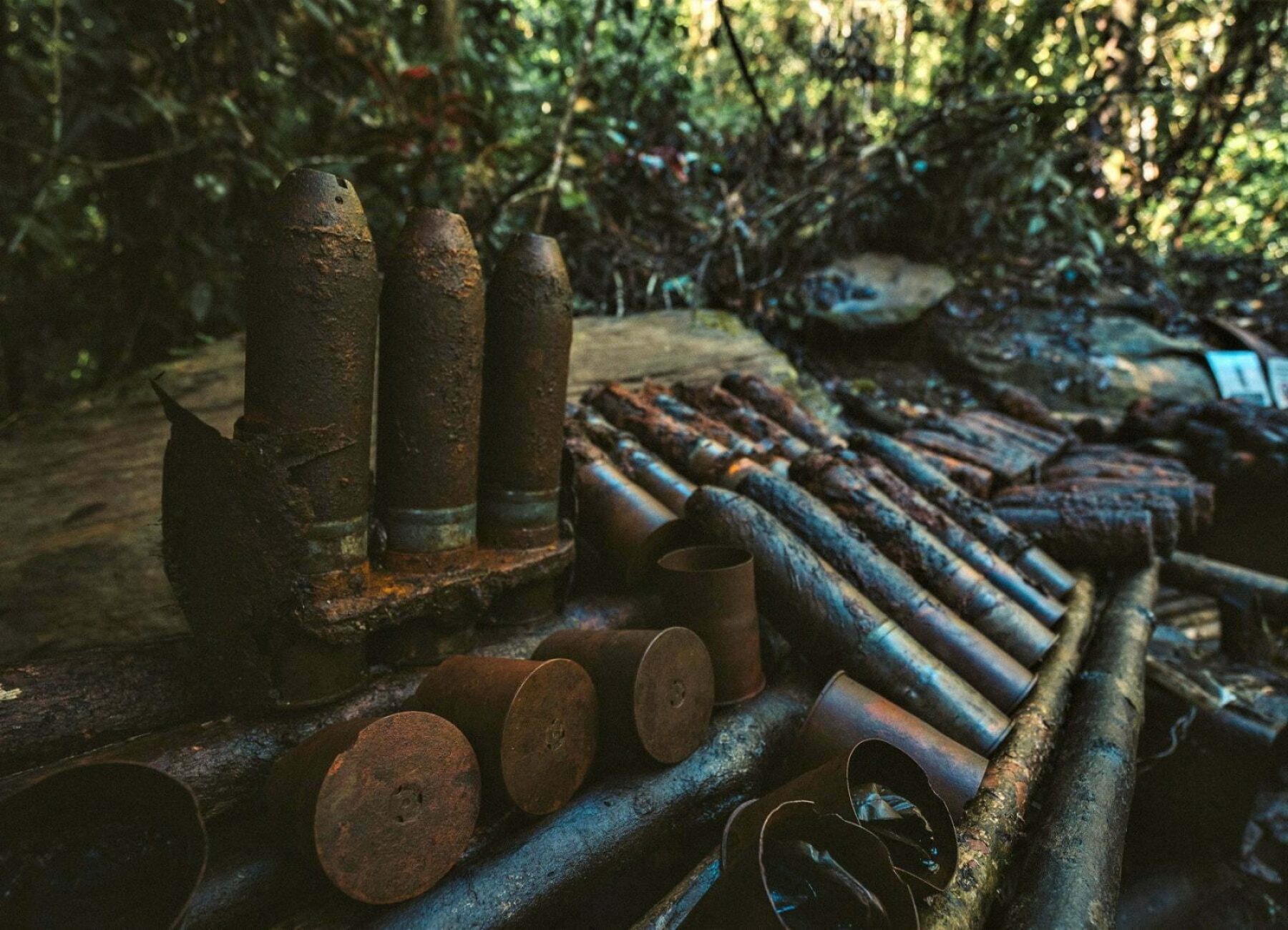
Everyone’s full of advice before the trek.
Not a single person mentioned to me a thing about my neck.
It had happened all the time, but during this climb, it was especially evident.
My neck was sore.
Not from carrying a ten plus kilogram pack on my shoulders.
Simply from looking down at the ground.
If I didn’t, today especially with the ‘track’ below resembling something out of Tolkien’s Mirkwood, a jumble of tangled roots, where one false step would likely be a sprained or broken ankle.
Nobody ever mentioned the neck…
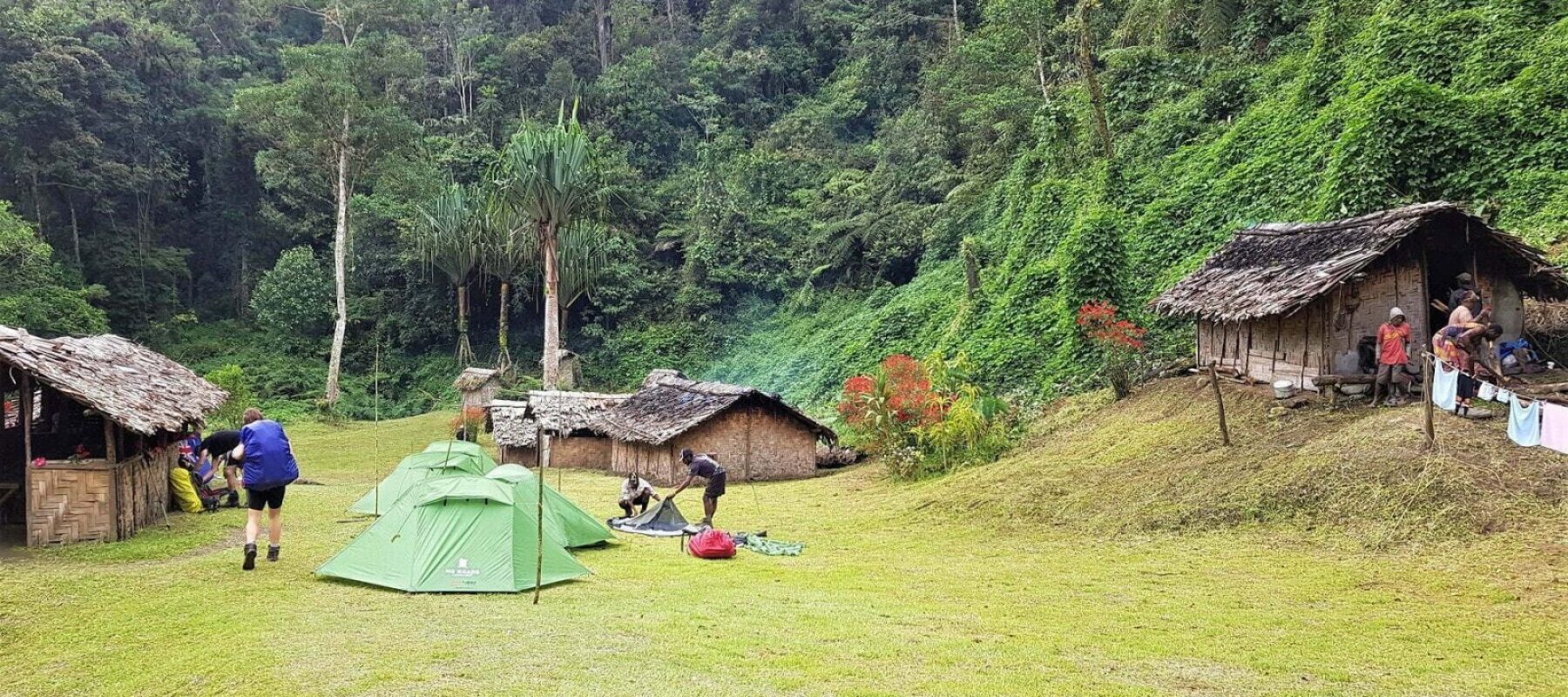
Three of us at the front of the pack made incredible time, and it was with some surprise that we got into Templeton’s Crossing before the boys in front had even set up camp.
That felt like an achievement.
Bathing in a tiny cove, the only calm along an otherwise wild river.
That was cold!
As we turned in for the night, it began to rain.
The previous night, our guides had lit a fire in a hut, in which we hung clothing and lay our boots out to dry.
By morning, the fire was long dead, and the hanging clothes and boots, they were still wet.
Everything was wet, although the overnight rain, which had bucketed during the night had at least eased by morning.
As we shouldered packs to begin our first climb for the day (the hill rose immediately behind our campsite), it began to fall again.
I’m not sure if you’ve ever walked up a waterfall, but that was pretty much how our day began.
We were climbing up towards the highest point on the trail near Mount Bellamy (Bellamy peaks at around 2,250 metres), and it was bloody cold! So cold in fact, that we barely bothered to stop for a morning tea break, and instead after a brief pause to wring out our socks or empty boots of water, we continued our ascent.
Upon reaching that high point of the trail, we were also suddenly exposed to the wind, and it got colder again. The rain whipped across our faces, we were at times sinking into the hillside.
It was a trial by mud!
This was hard, this was the Kokoda I’d expected, but surprisingly, we all took to it in pretty good spirits!
Temperature regulation was a constant fight.
You’d throw on a spray jacket to provide relief from the rain.
Fifteen minutes later you were cooking, and wrestling with an octopus-like coat that wanted to cling to your skin as you tried to rip it off.
Today, I had fewer issues climbing in my hat, although I still regularly removed it for a bit of respite.
The rain was easing, it was eerily beautiful. Again, it could have been a scene from Tolkien…
But you couldn’t see much.
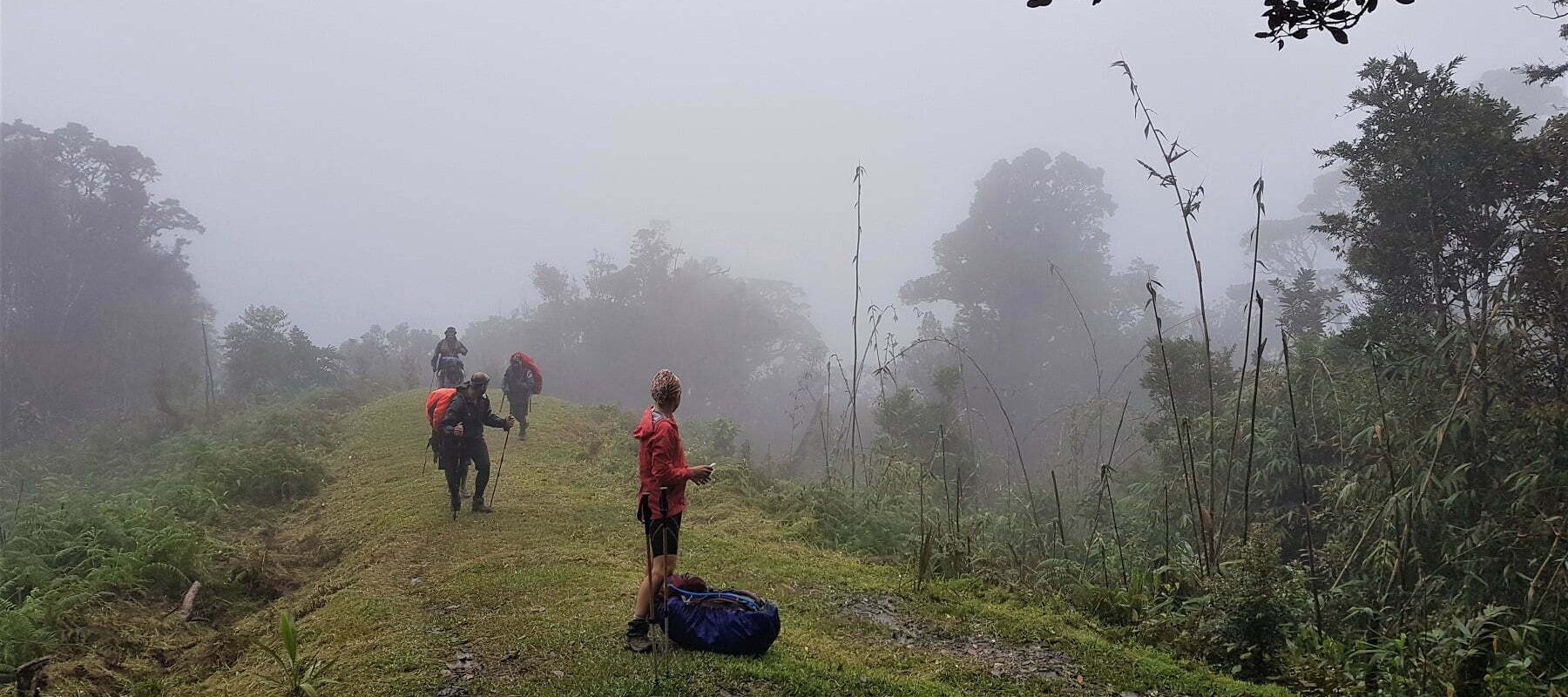
We lacked a sense of time, completely unsure of the scale of distance in this unfamiliar terrain.
If we asked Steve how long until the next destination, the answer was, without question, always going to be “About twenty minutes”
This twenty minutes could be as long as an hour, or as short as five minutes. It could easily become a fun, closest to the pin type of guessing game!
On this particular occasion, twenty minutes was definitely closer to the five, and just like that we emerged into a vast clearing where a fire was already blazing in a hut, and lunch preparation was underway.
If your next thought isn't donuts, then you'd be forgiven.
But seriously, as surprising as it sounds, our lunch that day, was donuts.
While we were busy lining our boots in a ring around the fire and hanging socks to dry, our local team was busy frying up rings of dough, slapping some frosting on top, and serving them up.
As amazing a surprise as it was, it was simply far too much sugar to suffice as lunch.
Perhaps a donut each as a post-lunch treat may have worked better?
When it was time to resume, at least the effort of slipping on smoky, slightly warm, still damp socks, was no longer a foreign sensation.
Again we climbed, and again we were surrounded by the mists of Middle Earth.
Apparently ahead lay the village of Kagi, not that we could see it.
Cresting a ridge we were advised was known as the Kagi Gap, it was supposed to lie directly ahead.
It simply wasn’t there (not like the planet of Alderaan in Star Wars, it hadn’t blown up, we simply couldn’t see it).
Tomorrow was to be a rest day, with the distance ahead being our final slog for a little bit, so we began the trek.
As everyone drifted out of sight up ahead and I fumbled with my pack, the cloud lifted for a moment, and there it was…
The approach into town, it was a doozy.
It was an open, well-worn trail, but the issue was again that compacted clay.
Like day one, it was like walking on ice, this time on a hill.
After hitting that ground hard on my arse, that final climb into Kagi was spent largely on the fringes of the path, where the grass allowed for a bit of traction.
This village was home to most of our local team, and we were met with song and wreaths of flowers on the outskirts. It also became quite apparent that our No Roads guide, Peter Miller, was something of a celebrity here!
The days’ conclusion sounds completely absurd, finishing with a dinner of locally made pizza (yes, pizza baked in an old oil drum) whilst drying our boots around a fire that sat on the wooden floor of a thatched hut…
Having a day of rest in the middle of our trek, scared the shit out of me.
What if these legs, those same legs who have held up remarkably well, but were totally unprepared find the day of rest actually causes them to seize up?
If you’re not a fan of Jesus, then, you might chalk parts of today down as a loss.
This day was the sabbath (Saturday for the Seventh Day Adventists), so it was out of respect for the locals that we were sedentary for 24 hours.
I’m not really one for religions, so it was somewhat painful to sit through their morning church service (I sucked it up and sat there quietly), we visited the local school where we donated some books to their library which had been carried through the trek, but it was largely a day to do nothing.
I wrote and read a little, others slept.
The afternoon was largely punctuated by increasingly heavy showers before dinner.
You can’t begin to comprehend the dark out here if you’re a city dweller, but up here on the hills, when the sun’s set, and it’s a clouded night, it’s bloody dark.
Suddenly, out of this inky blackness emerged a train of bobbing lights.
This was a posse of local school children, coming to sing to us en masse.
In theory, it was sweet. In reality, it was a whole lot of chanting about Jesus.
At least the hokey-pokey at the end was fun!
Minutes after we’d marched past Kagi’s grassy airstrip, the start of a lengthy descent, the rain began.
It would continue all morning, making for a slippery slide of a day.
Within minutes, Logan (one of our group members) took a downhill run and flipped over a log!
At times, the path resembled a flowing creek.
At other times, the path actually was a flowing creek bed!

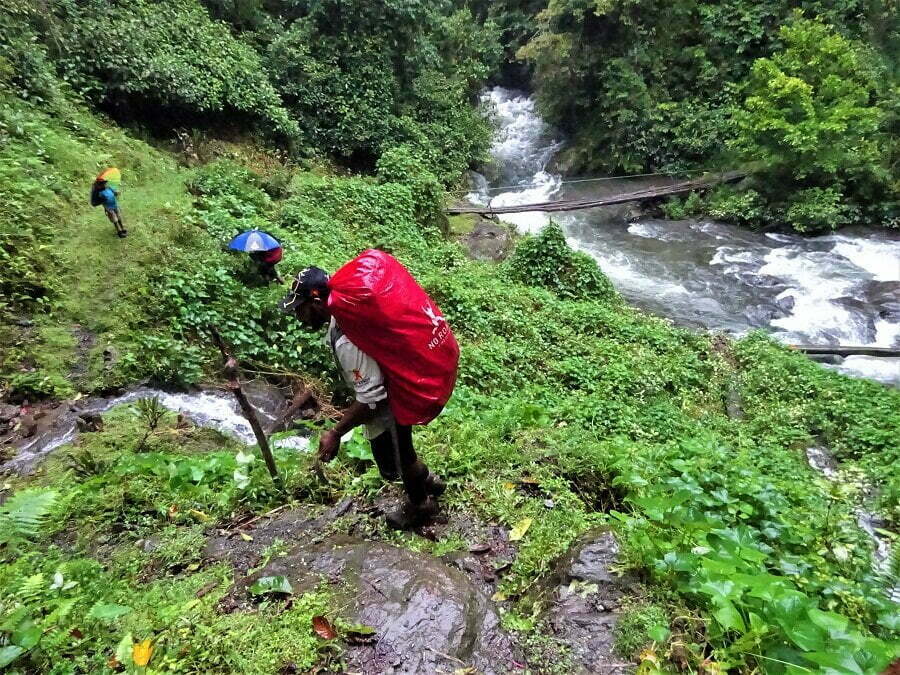
Wet leaves slapped against our legs, but when rain is plummeting from above, cold water would regularly pool on your rain cover before running down your neck, all while your boots trudged through a running creek.
If you like to be dry, today was not going to be your day.
A lot of down, a lot of up, a lot of wet.
All the way to Efogi 1 (for some reason, the village of Efogi is separated into two) where despite the rain, the entrepreneurial folks of the village had set up a market.
The first we’d seen along the whole of the trail (aside from the odd seller of cans of softdrink or packets of twisties).
To reward their efforts, I bought a woven bag.
Others bought some fruit.
I watched the steam rise off Ash as I sipped tea during our rest.
Since the second or third day, when I’d noticed Ashley adding a couple to her water, she educated me on the fact I could use my Voltaren tablets as a preventative measure, rather than simply a treatment for pain. As such, I’d been doing the same (I only mention it, as despite the rest day, my legs were still feeling really good).
How is this relevant? The slog out of Efogi 1, was a hell of an uphill climb and those legs continued to hold up to the challenge!
Ash, she was by far the strongest of our group, and she, Logan, and I were regularly near the front with me, sat as we were behind Steve.
When it came to river crossings, we were required to take off our packs and one of our local guides would carry it across.
As Tobias charged across a pair of logs, one of them fell, and he along with my pack very nearly tumbled into the river. But for a small island in the middle, he certainly would have.
We’d had to simply inch our way across.
By the time the others appeared, somebody had strung up a rope for them to hang on to!
The sting! That was something else either nobody else has suffered through, or they just decided it wasn’t worth sharing. When that sweat that is pouring off your brow trickles into your eye, it stings like hell!
Mid stride, up a muddied, slippery slope and there you are, trying to find a piece of your sleeve that isn’t already soaked in that same sweat (I learned that the hard way, when a nice salty bit of arm just made the stinging even worse)!
We slogged our way uphill out of Efogi 2, where we’d had the pleasure of watching local kids playing football (soccer) in a pool of water.
Somewhere during the day, we’d crossed the halfway point of our trek as well.
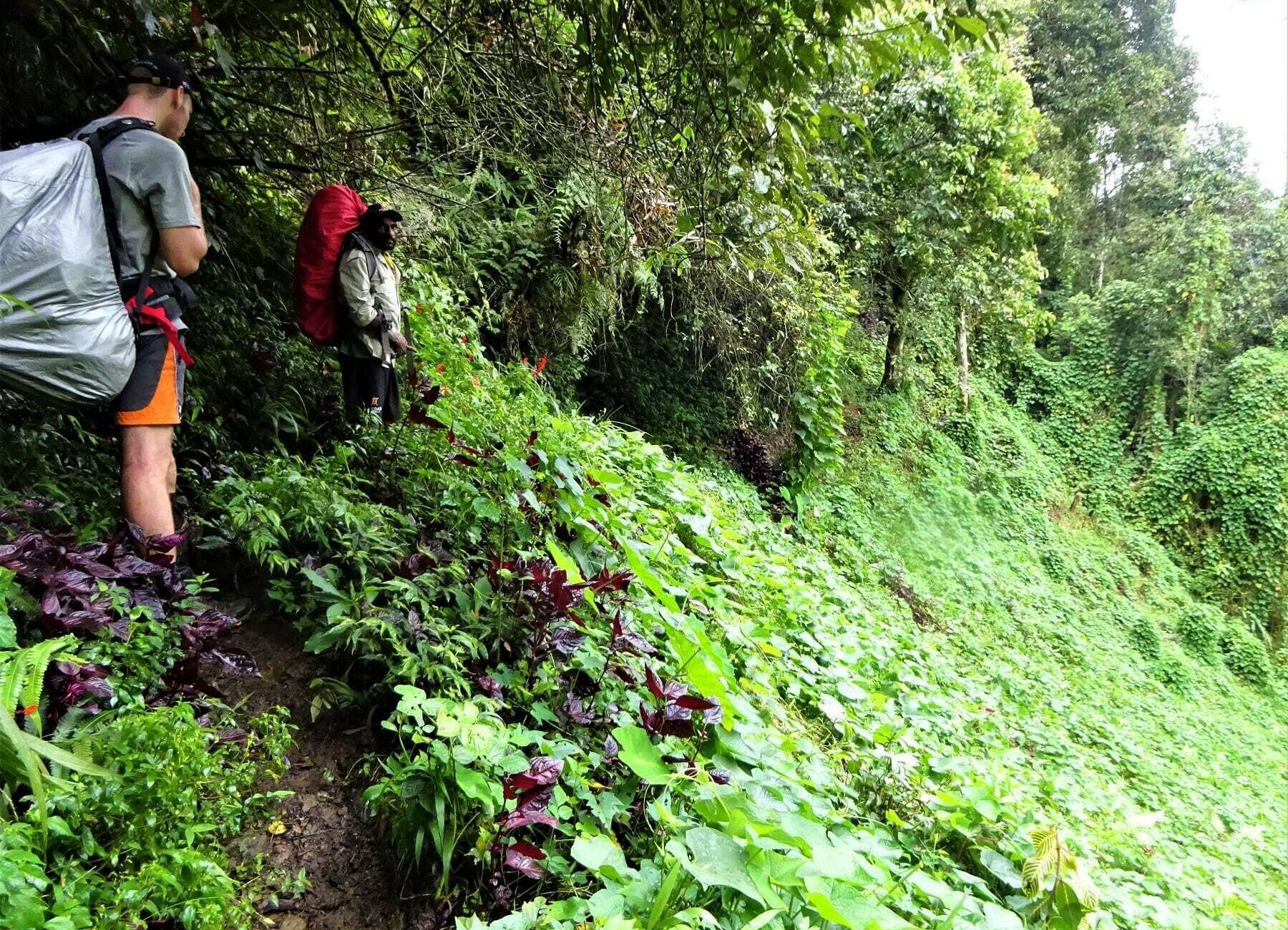
As we climbed, we were heading 78 years back in time.
This was Mission Ridge and Brigade Hill, site of a catastrophic battle (for the Australian forces) during the second world war.
We had a brief moment to absorb it all, before seeking shelter for lunch as the rain began to piss down!
When we resumed, it was still raining.
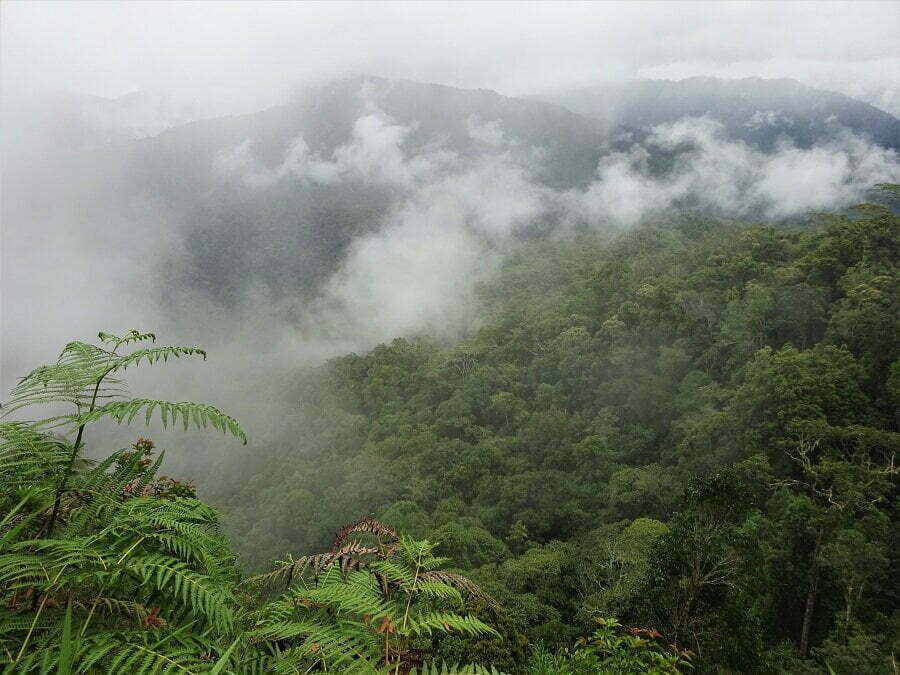
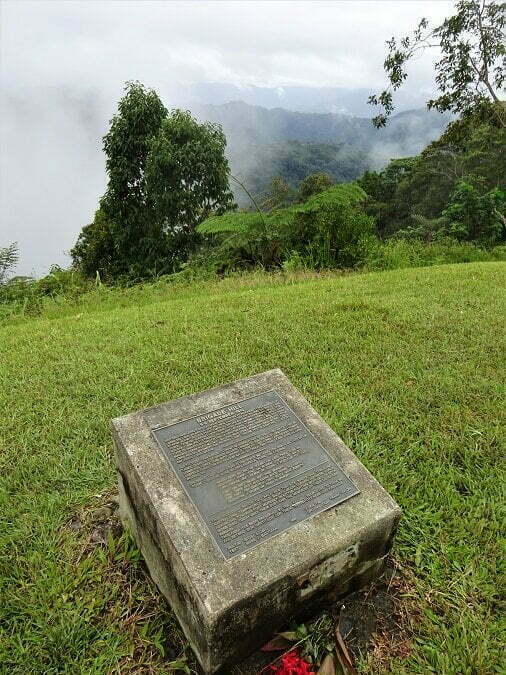
It had felt like a huge day, and despite the conditions and the distance, somehow I’d managed to complete it without once slipping on my arse!
Since Brigade Hill, it had pretty much felt like it was a climb, on top of climb.
We crested a rise, and suddenly there it was, the airstrip that marks the edge of Menari.
At this point, all thoughts were in the vein of “We’ve made it!”
Those thoughts were misplaced.
Fast forward (not that anything about the intervening period felt fast) half an hour, and we were finally dumping our packs in camp.
At the time I summed it up thus: “First there’s the whole fucking airfield, then through the whole fucking village, across the creek before we’re finally into fucking camp”
If you couldn’t tell, by then we were over it, but I did manage to complete the day without a fall!
Two and a half days to go, and for the first morning in several, we resumed our trek under blue skies and sunshine.
It sounds pleasant, but it’s not.
With the sun out you get hot, and this particular morning starts with an intense climb up to a narrow saddle (the saddle being narrow enough, that one of our guides packs fell down the other side, his flip-flops flying off in all directions).
The short day ahead, a steep down, a long swamp crossing, then a steep climb.
I’ll give you the hot tip now.
You want a cool day for that swamp crossing.
With the sun out, that bastard of a place was all steam and mosquitoes!
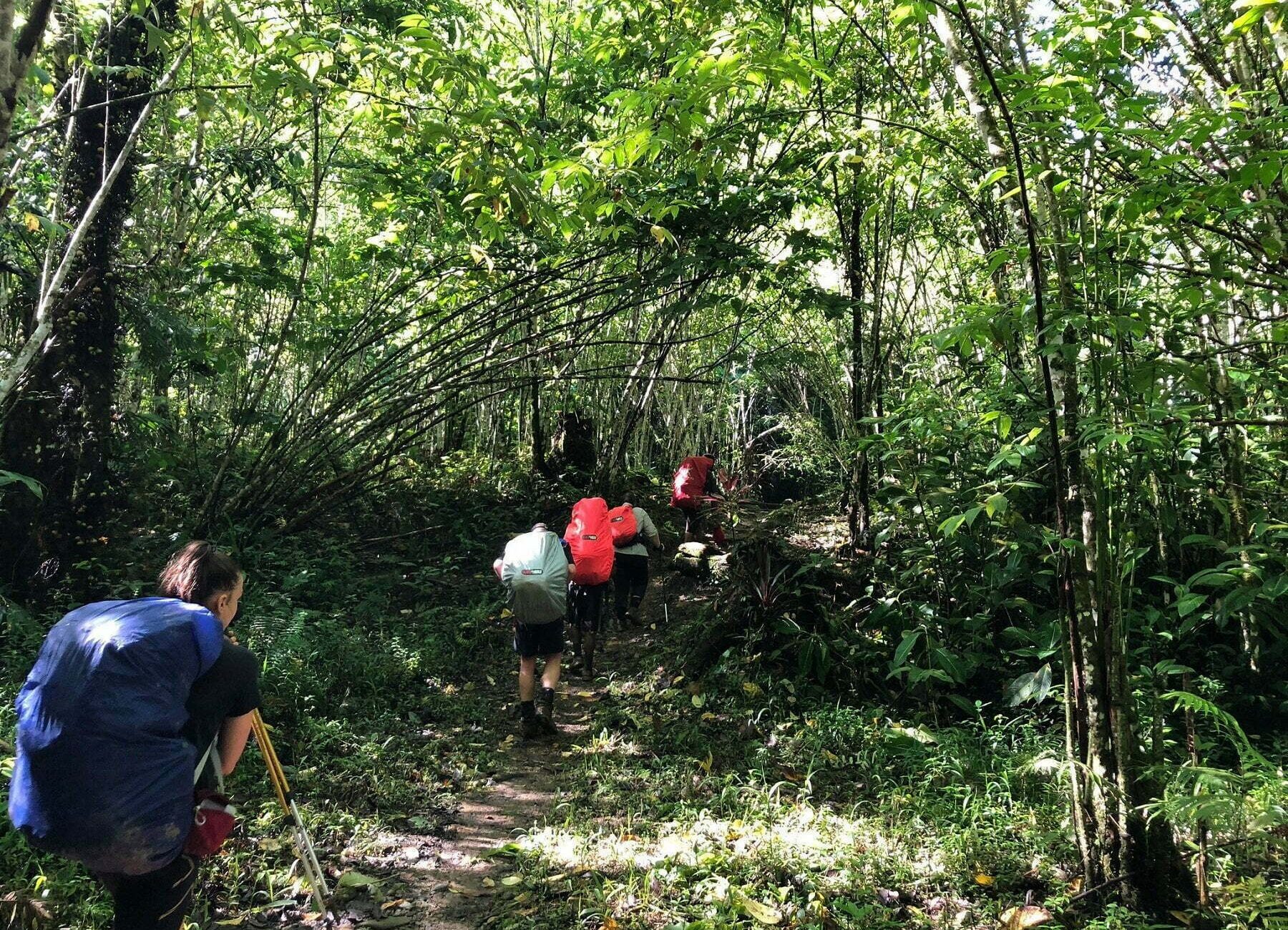
Where there was some form of crude bridge or boardwalk, you knew it was deep.
For all the other sections, it was simply a case of watching where the person in front of you took a step.
If they sunk, you’d look for a new option.
Should they not, you’d wait for the small section of log on which they’d stood to emerge once again.
Lucky was when you slipped and there was a tree close enough to grab hold of.
Unlucky, that was when you’d fall flat on your arse, legs flailing like a turtle.
Crossing Brown River (the widest river crossing of the trek), Tobias, again carrying my pack, almost fell in.
Minutes later he could be seen surfing downstream on a log.
Fun times!
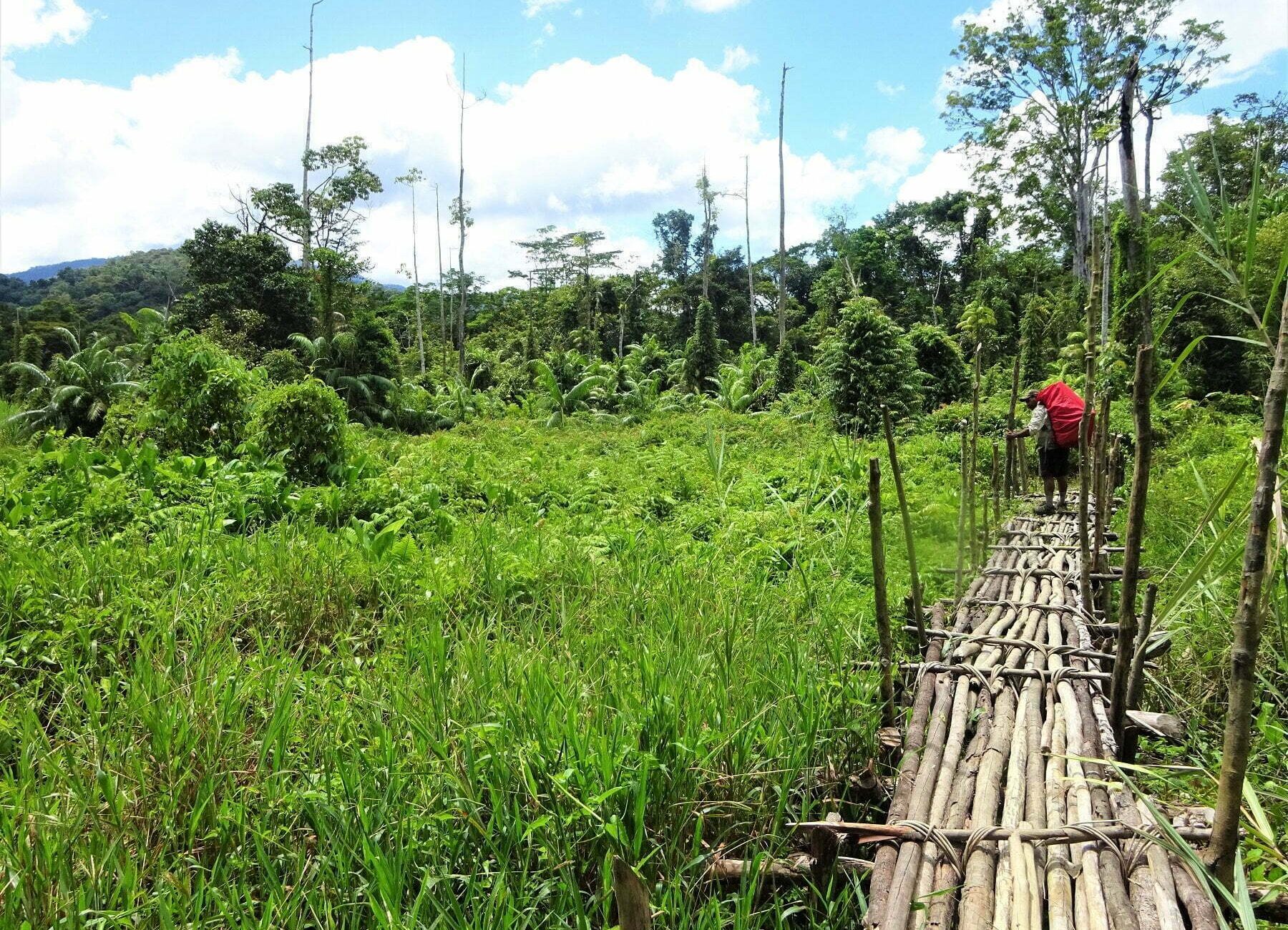
Across the swamp, it was a short yet brutal climb up to the village of New Nauro (old Nauro was back down the hill, far too close to the swamp).
What was not immediately apparent, was when you’re camped on the side of a hill, it means you haven’t yet reached the summit.
We’d realise that in the morning…
For now, I entertained myself chatting with a quartet of doctors who stopped here to lunch.
They were walking the “Fast Kokoda” (this shaves 2 days off the trek time, and loses a rest day) in the opposite direction.
Two of them were feeling fine, the other pair, not so hot.
It’d been arranged as a surprise Stag do for one of them who’d only days ago flown into Brisbane from Dublin.
Now, with no heads up to prep for the trek, and after a bit of a night in Brisvegas to celebrate, it’s little wonder the poor bastard was suffering!

Come morning, the clear skies had passed and we begun the day with a steep, slippery climb, again under cover of rain.
The wetter days are a bitch in which to get started.
But once you’re on the go, especially climbing with a full head of steam, they’re something of a godsend.
Anything that can cool me down as I climb is appreciated.
You take the slipping and the sliding as just part of the experience.
And when you’re wet already, it certainly isn’t all that much of a stretch to plunge waist-deep into a flowing torrent.
On the plus side, the waters could have been stronger and higher!
Beyond Ofi Creek, we had a bitch of a climb up to Ioribaiwa Ridge.
It felt like one of the toughest ascents so far (our adept guides again telling you that this, like every climb, is the toughest).
At its crest, we sobered up pretty quickly, our travails irrelevant when presented evidence of those who not only sacrificed their lives in war, but even more recently on the track…
This was the image I’d half-joked about in my head. For some poor family, that tragedy was all too real.
I couldn’t help but feel like an arse…
We explored some of the old trenches atop the ridge, I cracked open a packet of lollies I’d carried the length of the track, trying to lift the mood, then we trudged on.
In the small village of Ioribaiwa, we halted our descent to lunch. A gourmet affair of crackers and whatever packets of instant noodles remained.
A can of orange soft drink, bought from a local kid, the perfect tonic with which to wash it all down. It doesn’t sound like much, but the hit of sugar and salt tasted amazing!
Airing my feet, they well and truly, like most days, looked like prunes…
Still mostly down. ahead lay a stretch known as “11 Creek Crossings”
That moniker is very literal.
Those feet were not slated to look better, any time soon!
Somehow, this afternoon I strode alone with Steve, the ever-present pace setter.
We’d find the wrong ways to cross the creeks, then let the main group behind us take an easier route.
It seemed to work surprisingly well.
Equally surprising, my legs still felt strong.
Getting into Ua-Ale Creek camp for our last night on the track, I was feeling really good.
Despite such feelings, it didn’t make me appreciate any less, the great watering hole that was available, in which to cool down and relax!
I alone abandoned the tents this night, opting for the hard floor of one of the huts. It felt good to have a vast dry space in which to stretch out… as long as I was okay with everyone’s laundry drying above my head!
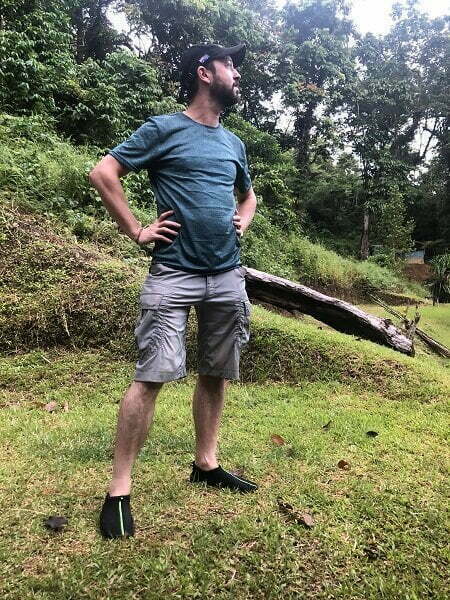
Misty, and I was wearing reef shoes.
That’s how the morning of our final day on the Kokoda Track began.
Despite our exertions, my early forties paunch remained front and centre…
The reef shoes, they were a pair of el cheapos from K-Mart, carried the length of the track.
Knowing that we’d be starting the day with about half a dozen creek crossings, I had my boots tied to my pack, and my only pair of dry socks stashed in a top pocket.
When everyone else forded that last creek, and I had dry socks and boots to pop on, I felt like a smug as king shit!
Imita Ridge.
The entire trek we kept getting told that the next climb was “the tough one” (a clever ploy when you think about it), but this one was definitely one of, if not the toughest.
Maybe the fact that the Sun was in full bloom made it that bit harder, that bit hotter.
Sweat ran off the brow in a torrent. Little slower than if it had been raining.
By the time we finally made that saddle, even some of the local guides were sucking in the air!
It was the perfect time (and place) to polish off the last of those lollies…
When we hit the Goldie, our last river crossing before the final ascent up to Ower’s Corner, I simply couldn’t be arsed taking off my boots or my socks.
So much for my arrogant smugness and those dry feet…
The climb wasn’t all that bad in comparison to most. Still we halted just shy of the top, a chance for the group elastic to bunch back together so we could all finish this experience together.
That last three or four hundred metre stretch was brutal!
It wasn’t that the incline got that much steeper, although it possibly did, but we’d by now emerged from the jungle canopy and it was exposed.
One could, on certain corners (the climb was a series of switchbacks, although the trail felt like a dry creek bed), see the arches which were our final goal ahead.
As we strode those last few metres, then paused to allow Ash, Chris, and Nikki to finish together, for at the top stood Alarnah, seemingly safe and well!
Their reunion was so moving, there were surely almost tears among all of us!
A cold beer, an almost as cold selection of barbecued sausages and some slightly stale rolls awaited us, but you know what?
It all tasted amazing!
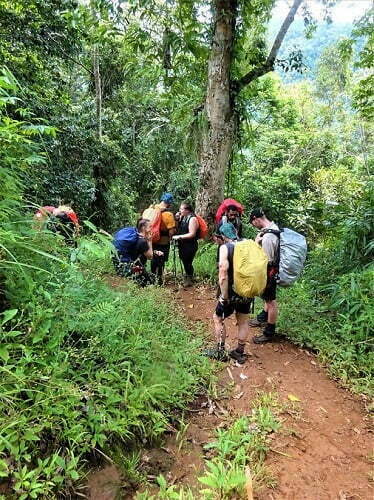
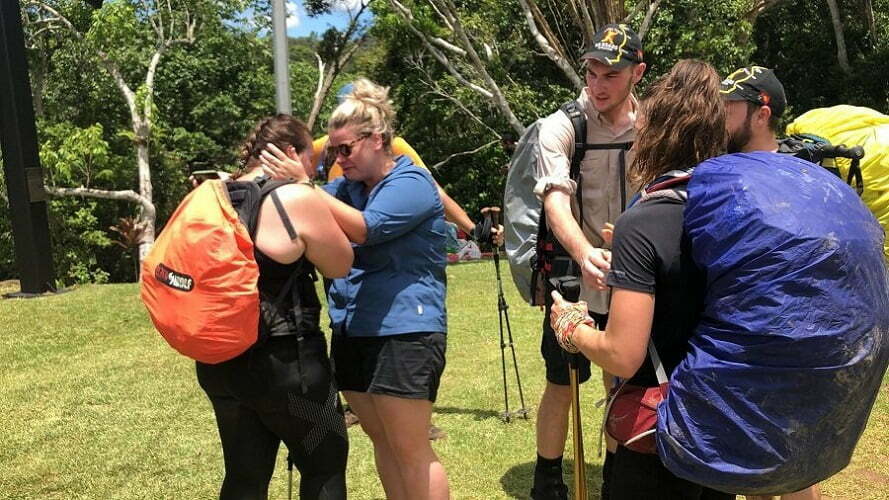
Incredibly, our trek was done, although our experience was not quite complete.
We piled into a waiting minivan, bounced our way across several dirt tracks before eventually hitting tarmac.
It was a much smoother ride from then on until we hit Bomana War Cemetery for a final opportunity to pay our respects to some of those in whose footsteps we’d trod.
We’d felt tough at times, but compared to those that fought in the track…
In place of their hob nailed boots, we had modern, hiking wear in our actual foot size.
We’d missed the dysentery, malaria and the whiz of bullets…
Our experience was seriously just a walk in the park.
To come here was humbling.
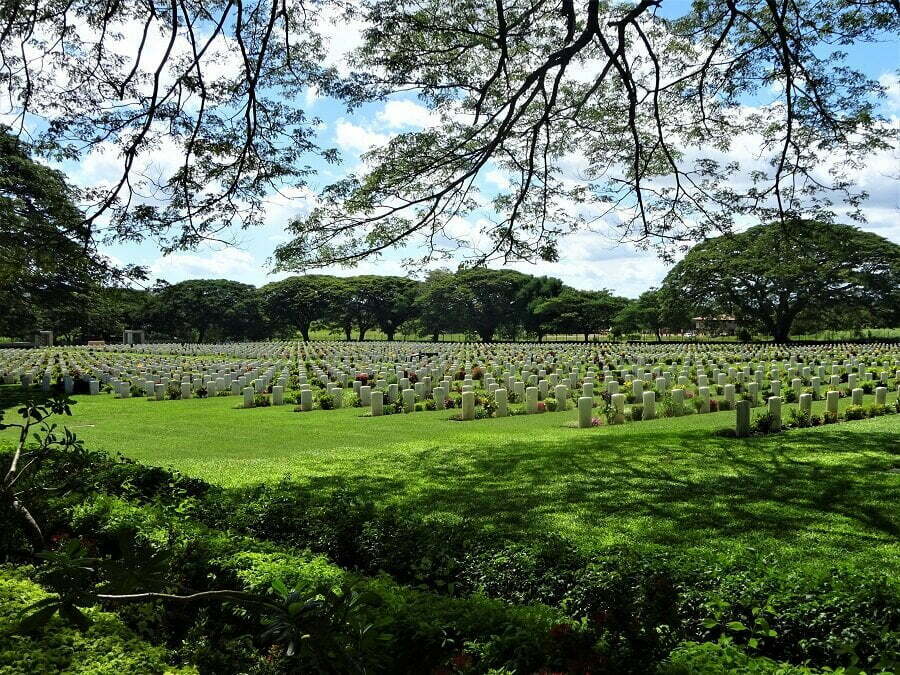
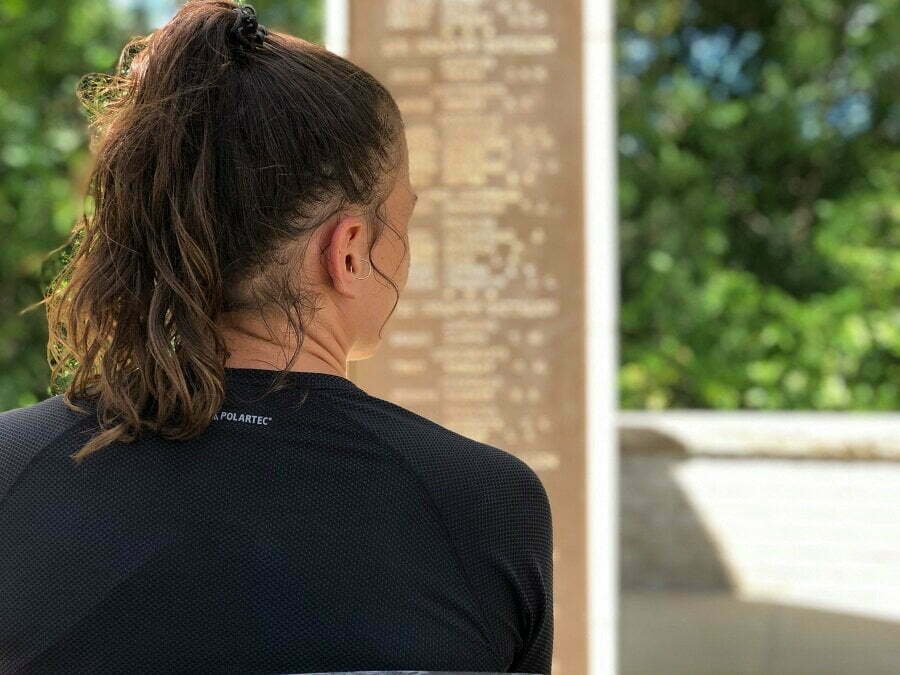
Along the track, we’d been given soldier cards and the chance to recite their story to the group at the appropriate time and place.
Some of those opportunities had been missed, through inclement weather, shyness on the part of some, or simply forgotten.
I’d had the chance to read mine, so made a point to look up the burial plot for Bert ‘Lefty’ Langridge.
A one-eyed Captain who’d died leading ultimately futile attempts to break through at Brigade Hill…
I met an older caretaker wandering the rows of headstones.
He was grateful to see a few people wandering about.
He was even more appreciative that I stopped to have a chat.
We paid our respects together at the headstone of Topipin, a member of the Papuan Infantry Battalion and at 16 years of age, the youngest of the fallen I had seen within the site…
Back in Port Moresby it hit home.
We were back in the real world.
We’d completed something that at one point I’d thought may have been the death of me.
I’d done it, as a slightly paunchy 40ish-year-old with next to no training or preparedness for the task ahead.
Within the depths of my pack had sat a smaller day pack that had emerged not once during the journey.
It was by now covered in a film of mould.
I’d borrowed an air mattress for the trek which by the time I’d wake every morning would be deflated.
Yes, I spent a week sleeping on the ground!
Upon my return to Melbourne, I realised I’d taken my own faulty air mattress, and left the perfectly good, borrowed one sitting on a bed in our spare room… goes to show what happens when you pack the weekend you’re leaving.
Transiting through Brisbane on the way home, the changes in the world in a little over a week became all too real.
Suddenly, there were scenes reminiscent of Brad Pitt’s World War Z.
A heaving mass of humanity completing temperature checks and forms repeating the same information sometimes 3 or 4 times.
It felt like bedlam because it was.
The country we knew was closing its doors, and back home, we had 14 days of quarantine ahead…
Thanks to all who trekked alongside me.
Logan (aka Dougie), Ash, Nikki, Chris, Alarnah, and Pete for their support, encouragement, and camaraderie… and all of our local crew, especially Steve who led us so well from the front!
Chris (aka ‘Wikipedia’)
Want to Go?
When?
The best time of year to visit the Kokoda Track is between March and November. However, from March to early May you may still get the tail end of the wet season. From May to September it is usually drier however rain is ever-present on the Kokoda Track so still expect some rain. October to the end of November is pre-wet season so it may come early it may come late. The busiest times on the Track are April around ANZAC Day, June and the Queens Birthday Holidays and September and school holidays.
How many Days?
Kokoda can be done in as few as 4 days and as many as 9 or 10. We suggest 9 days on the Track and for those in a hurry the Fast Kokoda which is done in 6.
Experience?
The Kokoda Track is a quite difficult trek. While the ups and downs are one thing, the trail condition which can be muddy at times is just as taxing on the body. A good level of fitness is required to complete this trek.
Getting There
All Kokoda trips start and end in Port Moresby, the capital of PNG. Flights from Sydney, Brisbane and Cairns occur on a daily basis. Flights from other state capitals such as Melbourne will go via one of these hub airports.
Support
Our Kokoda treks are fully supported by our local team and an Australian guide. You can carry your own gear or you can employ one of our experienced Local Guides to carry your pack for you, and you will then only need to carry a day pack. The cost of this Personal Guide is $720.
More Information
For more specific information and how to book, go to our Kokoda page which shows you all the options available to walk the Kokoda Track.





